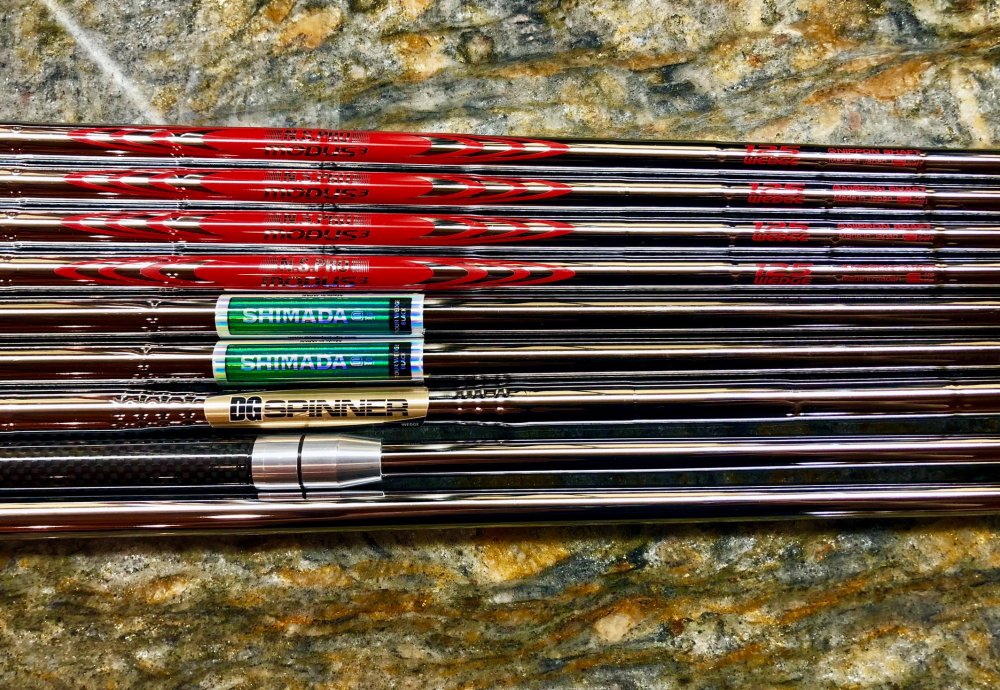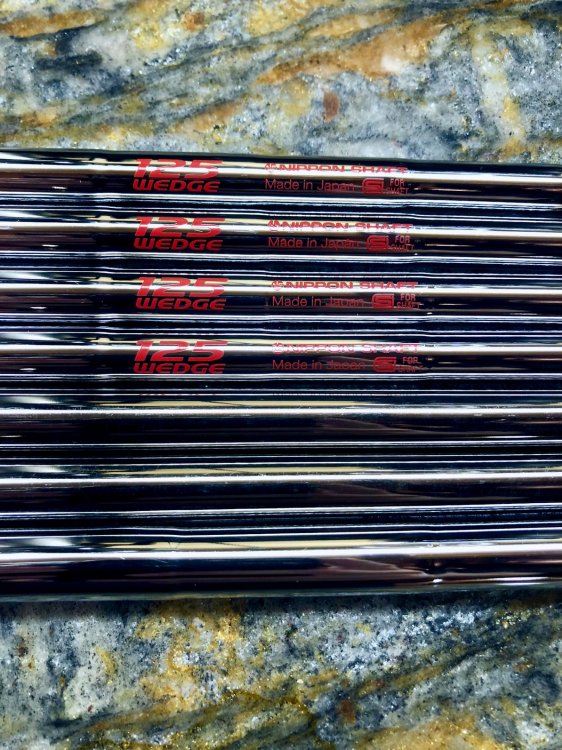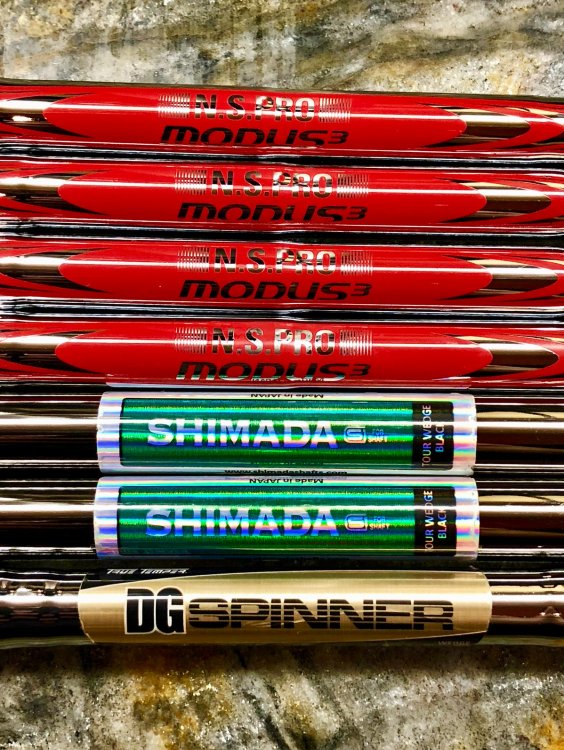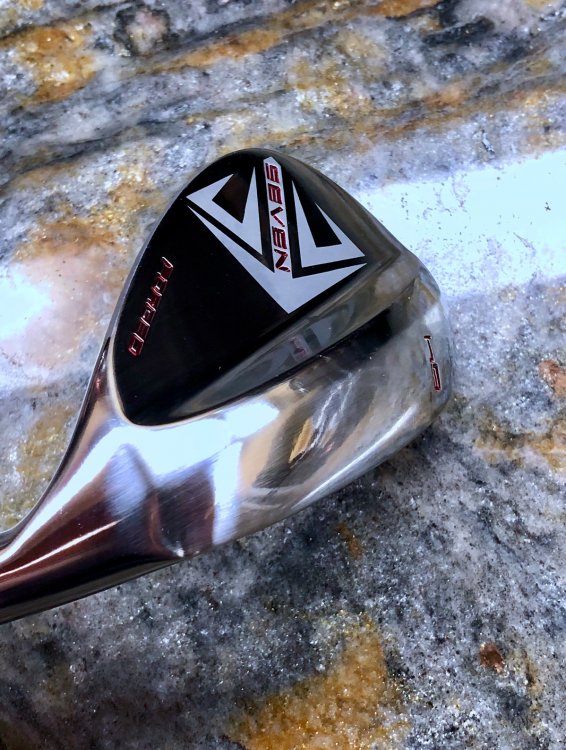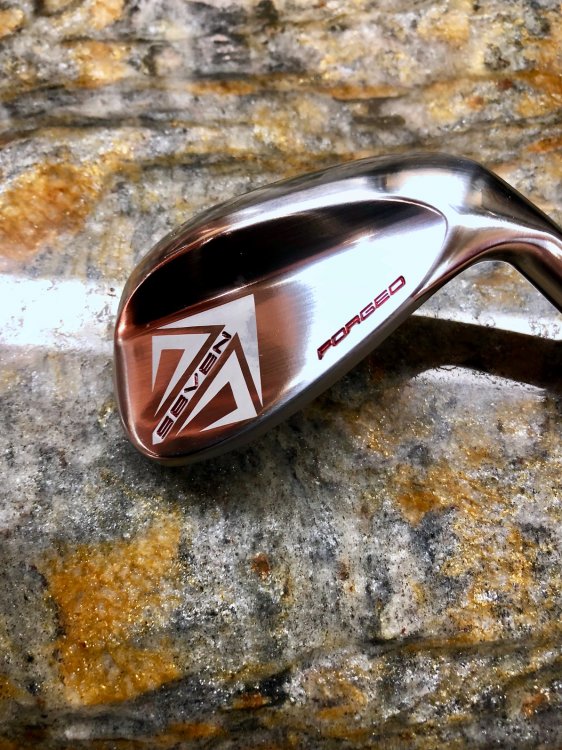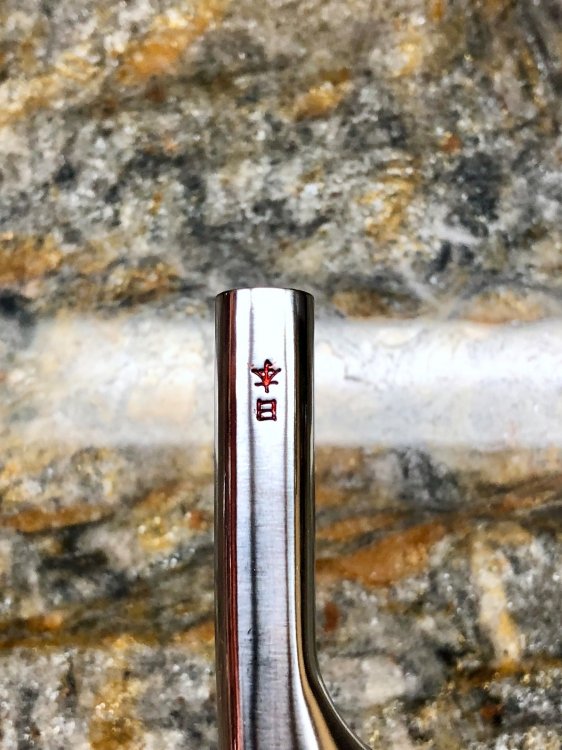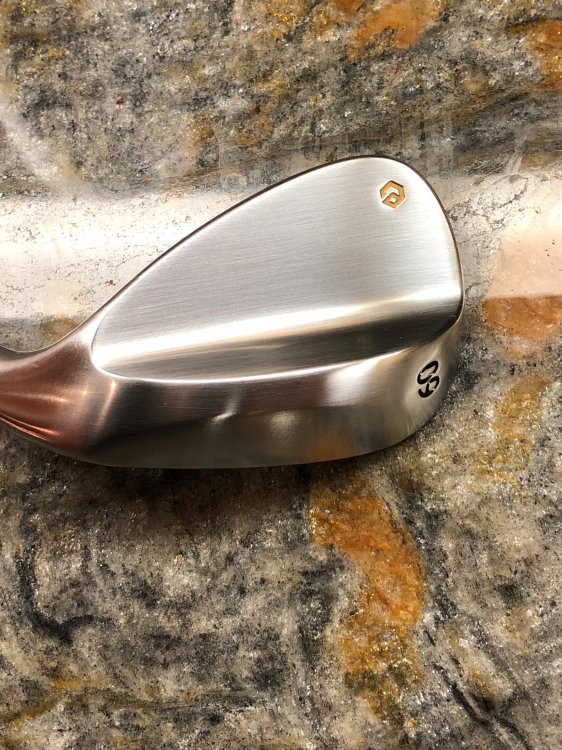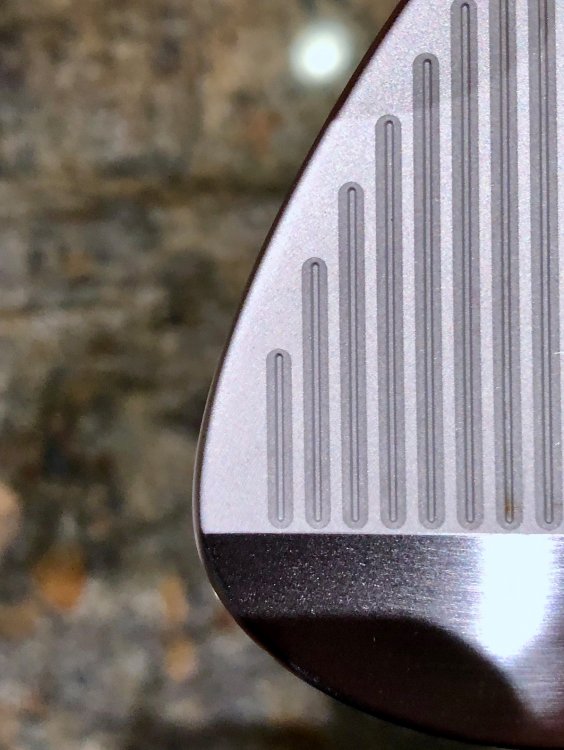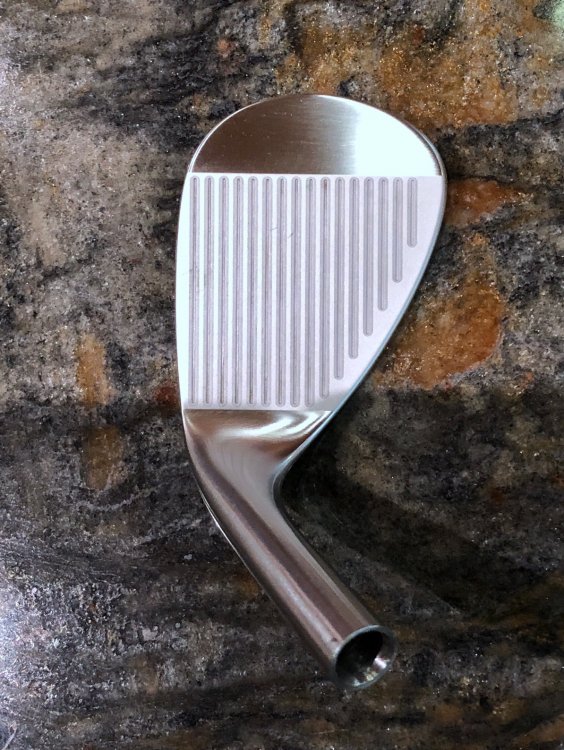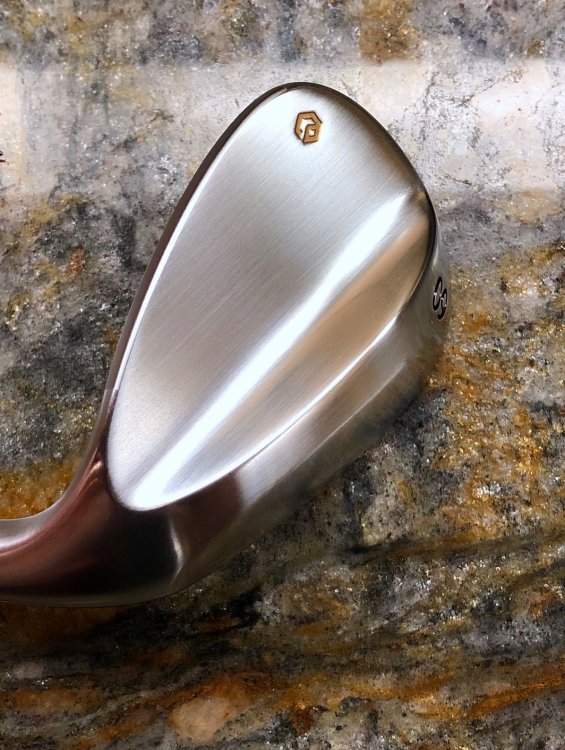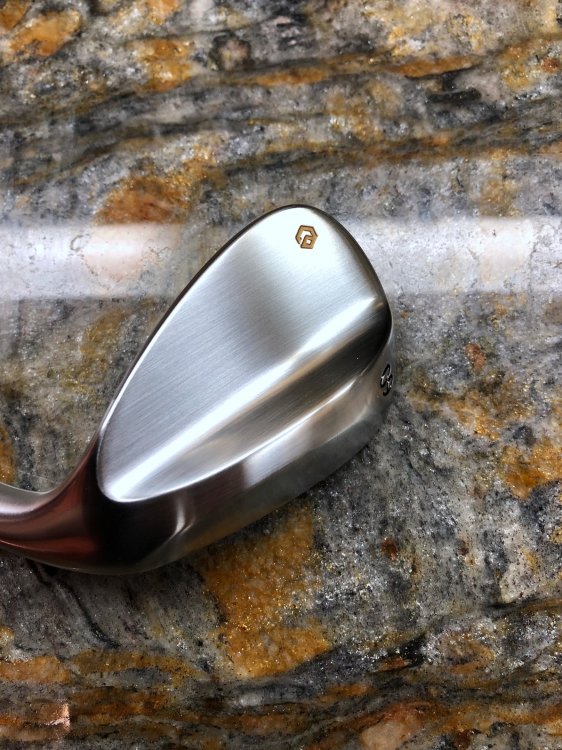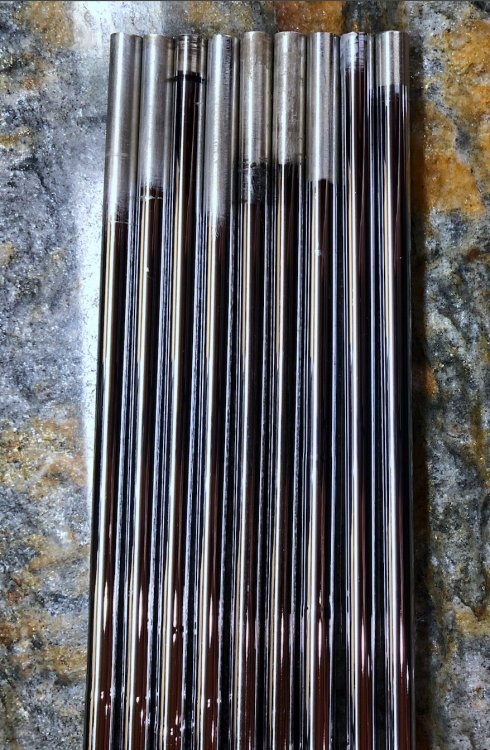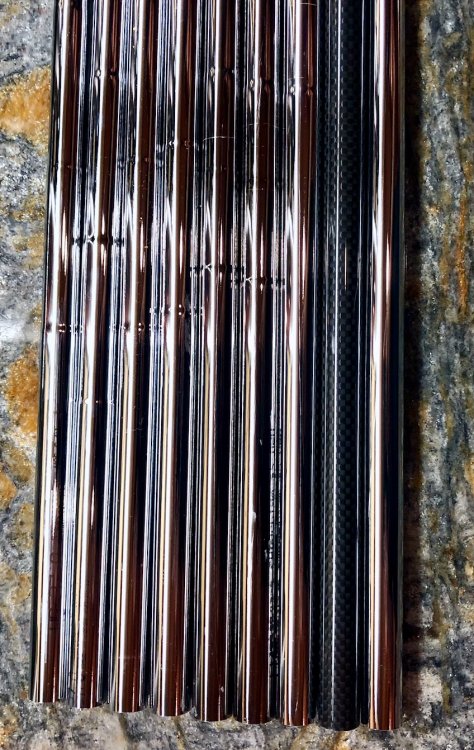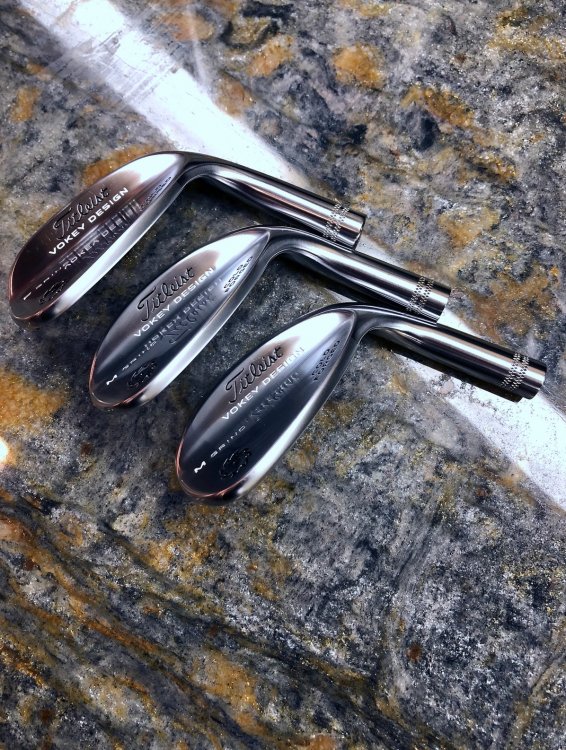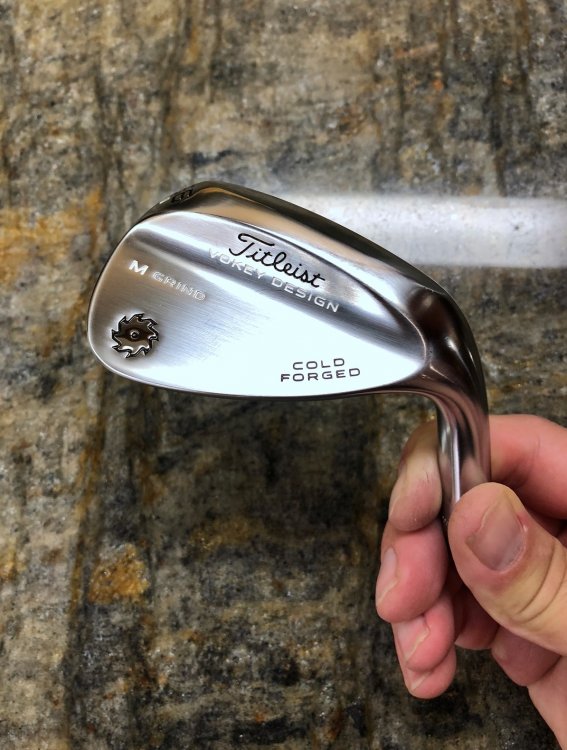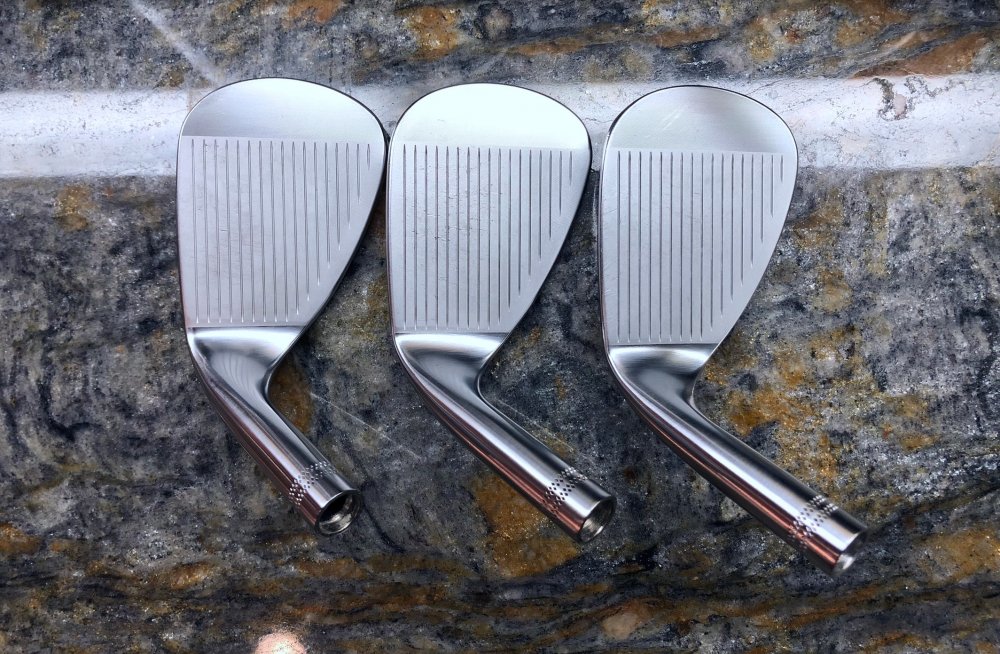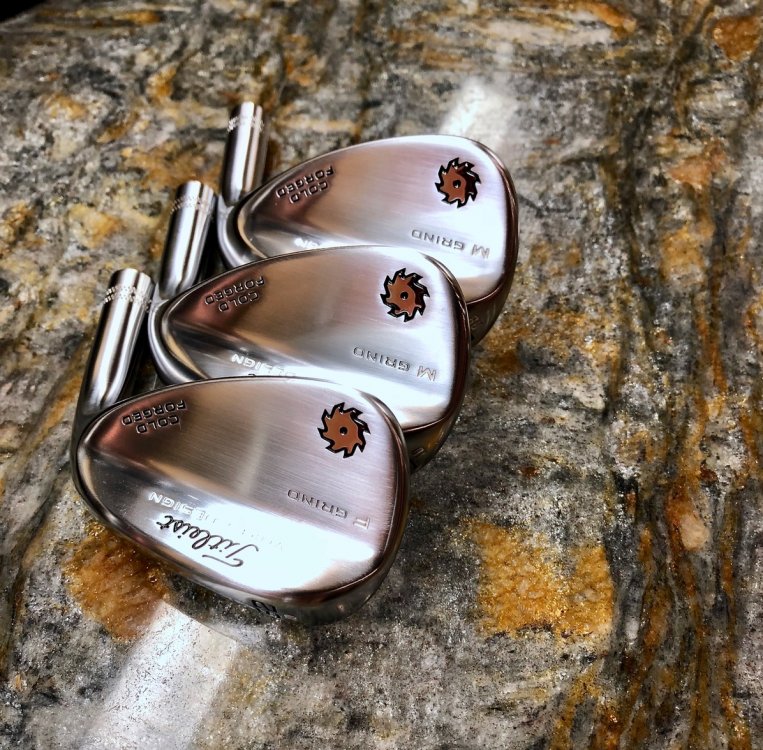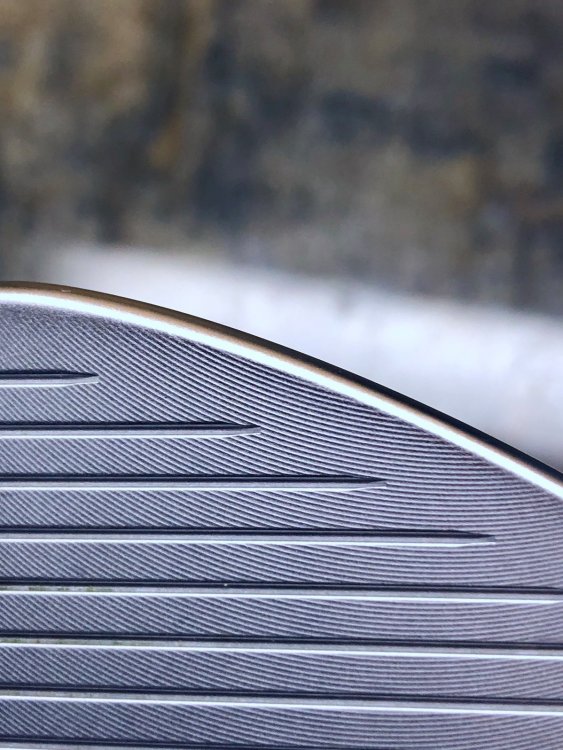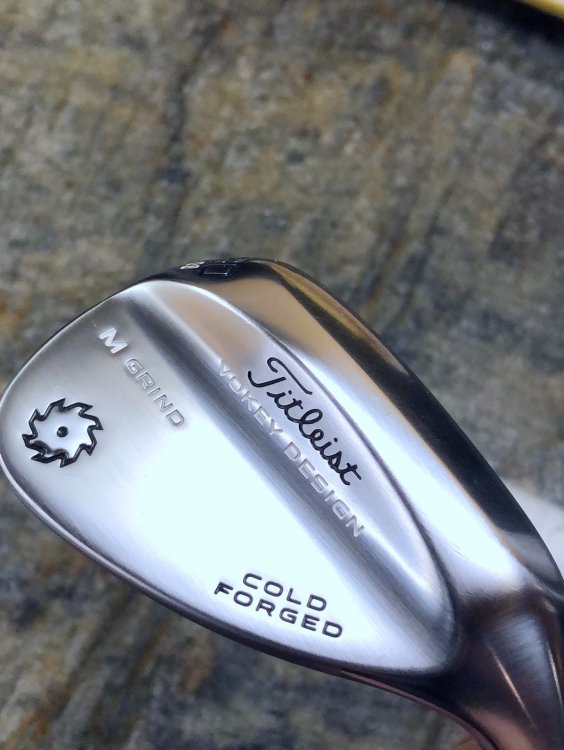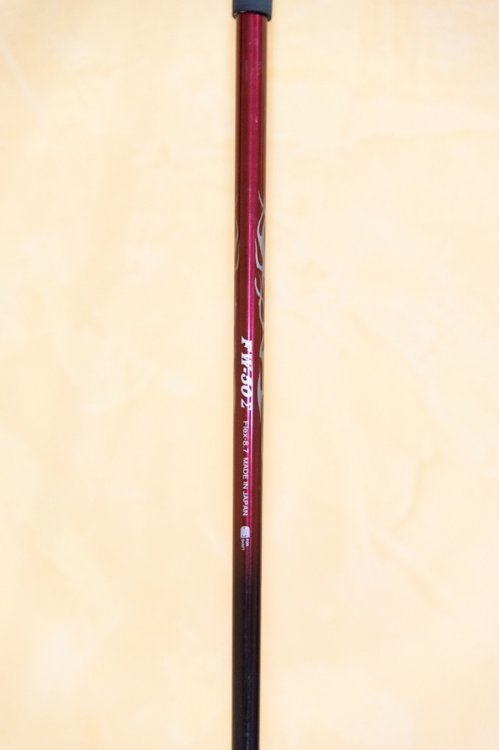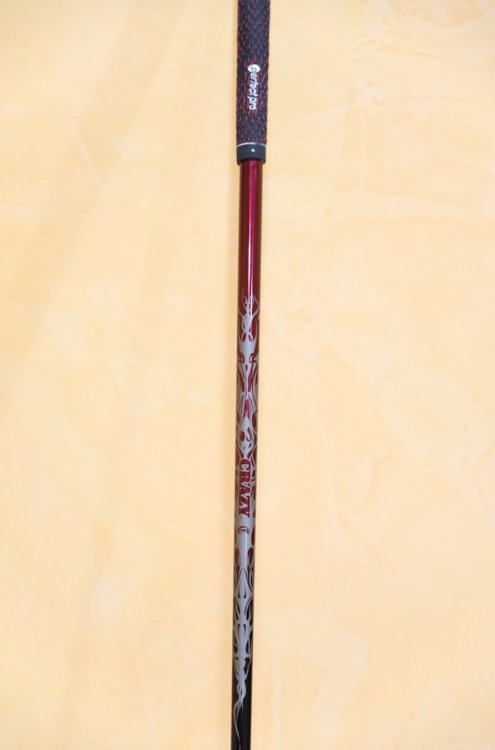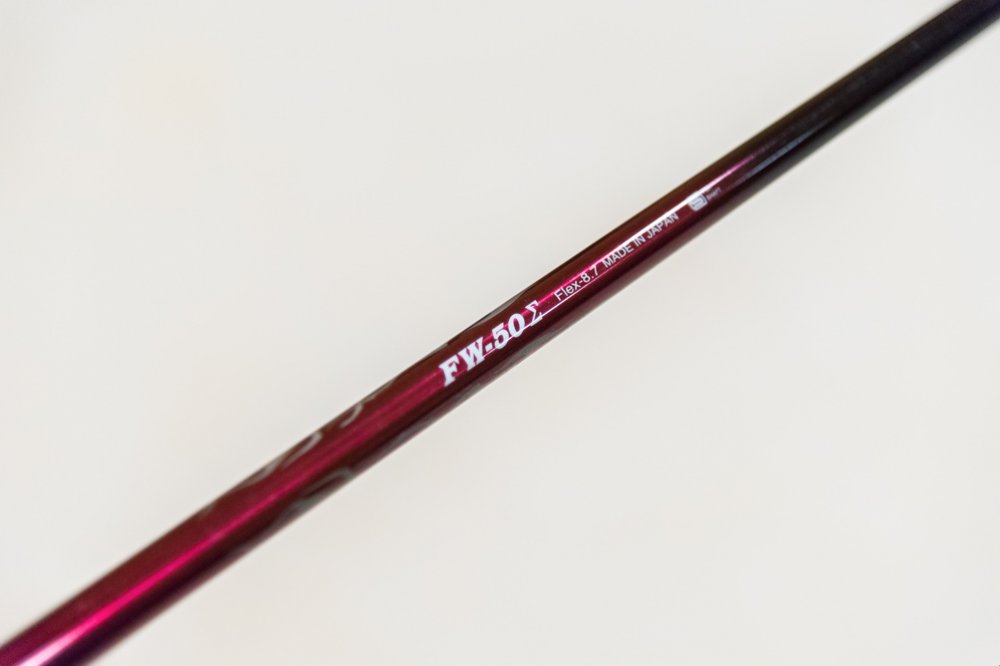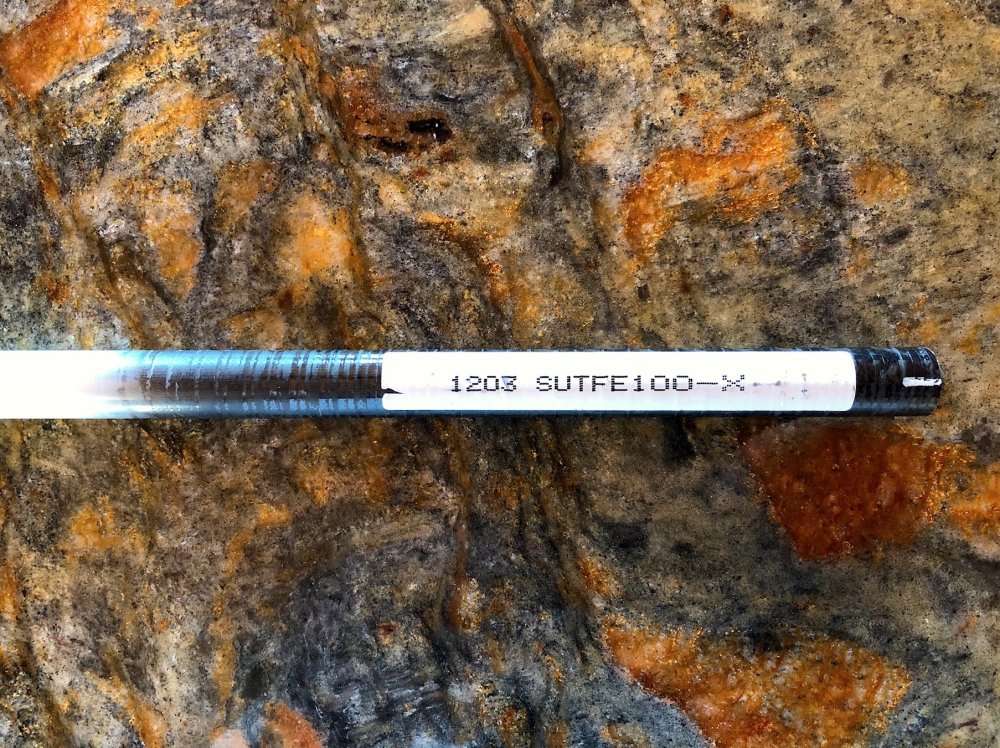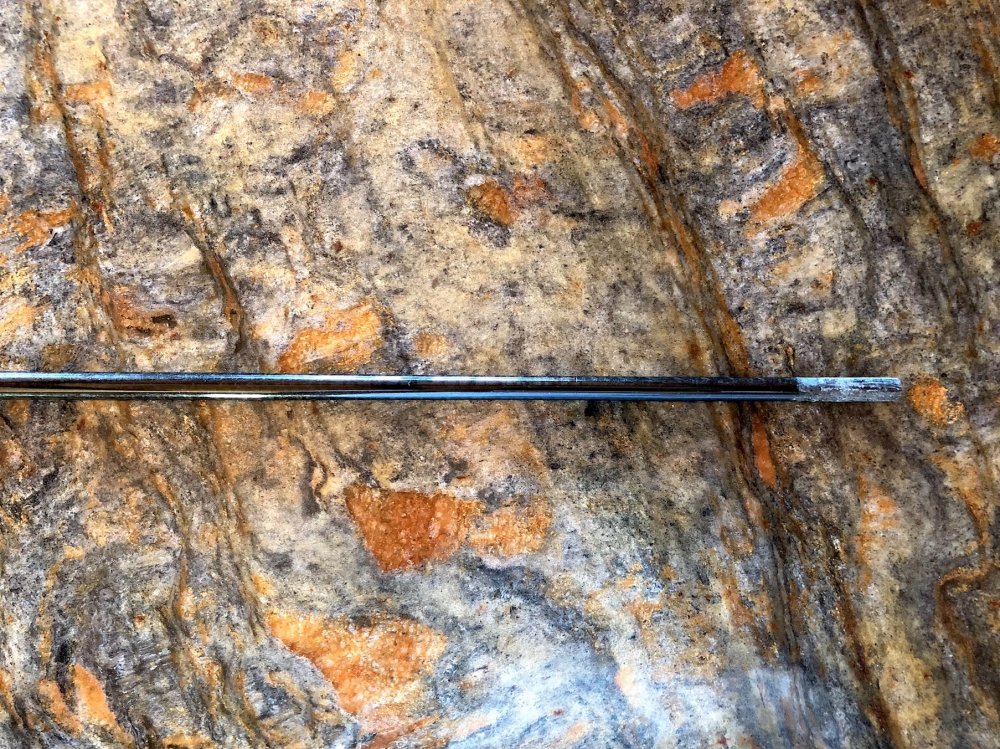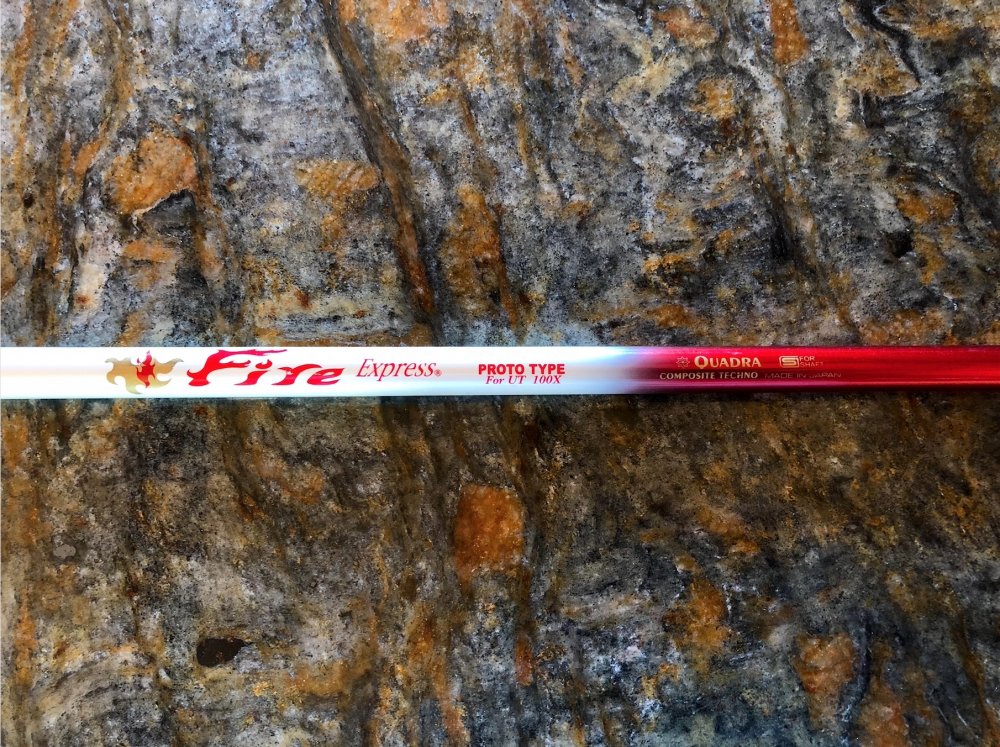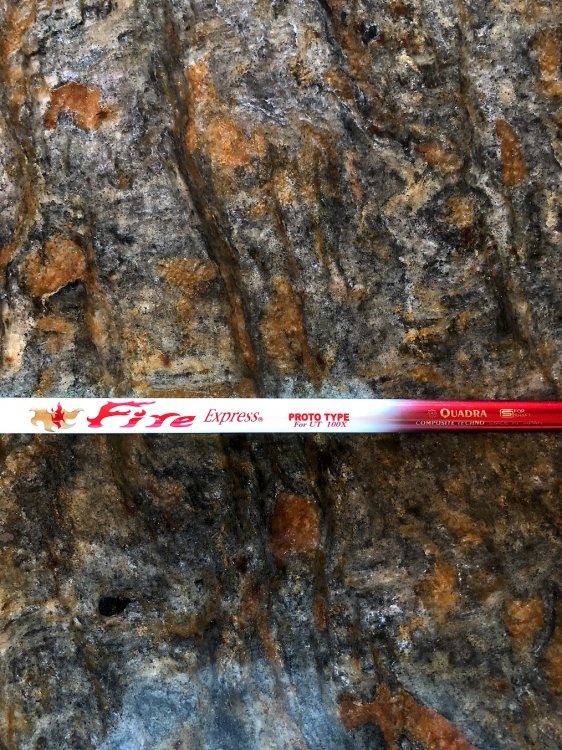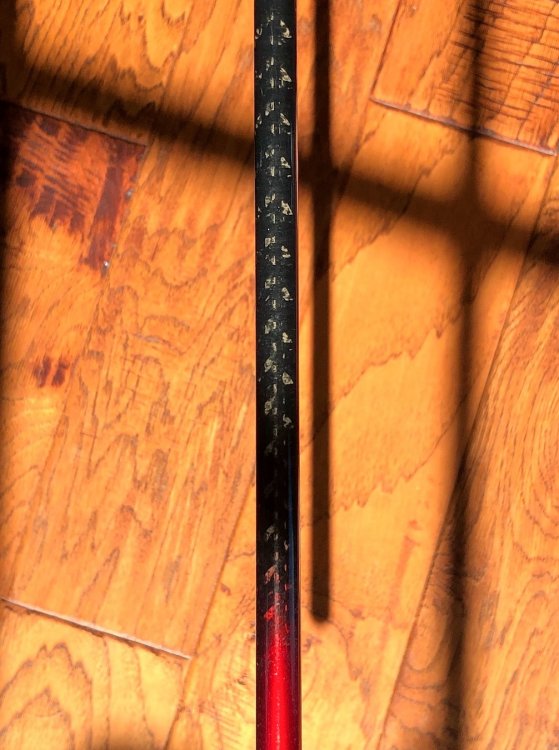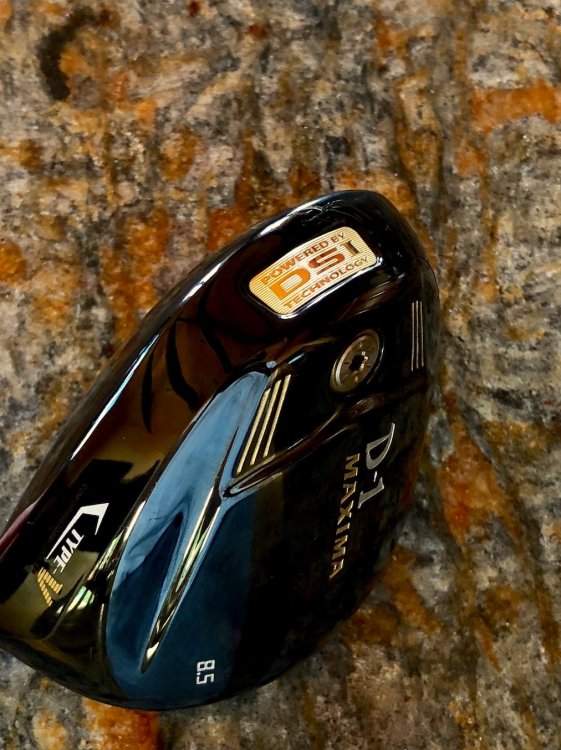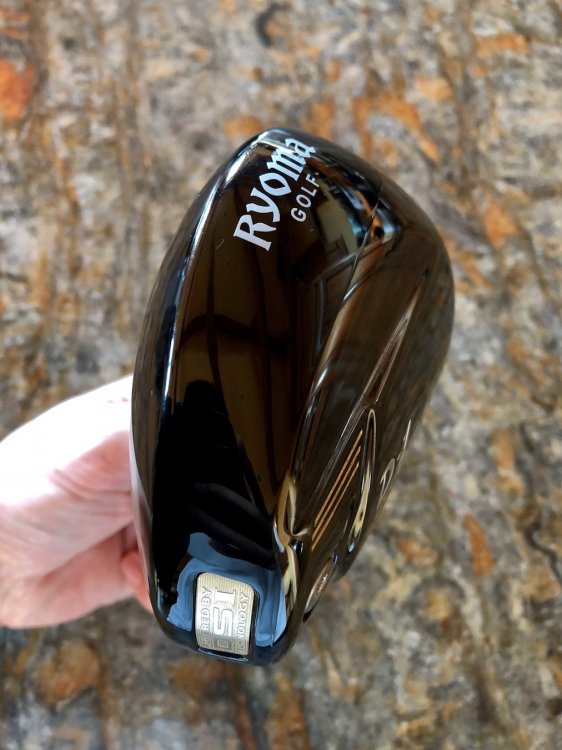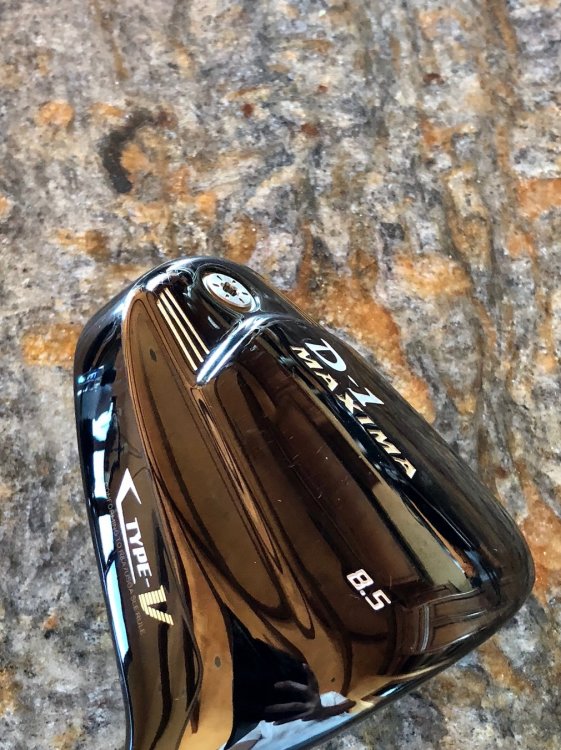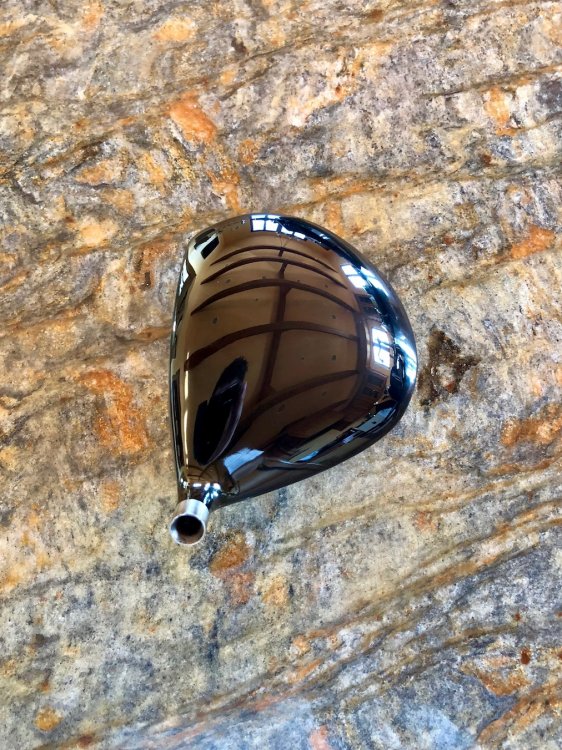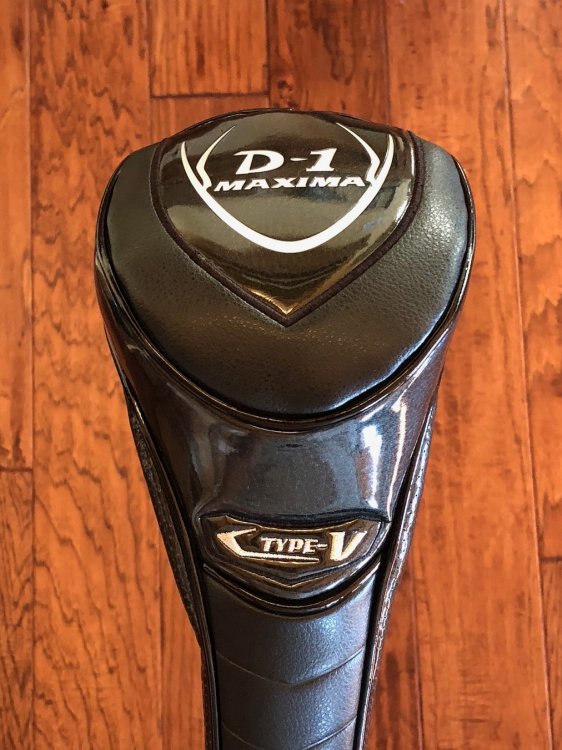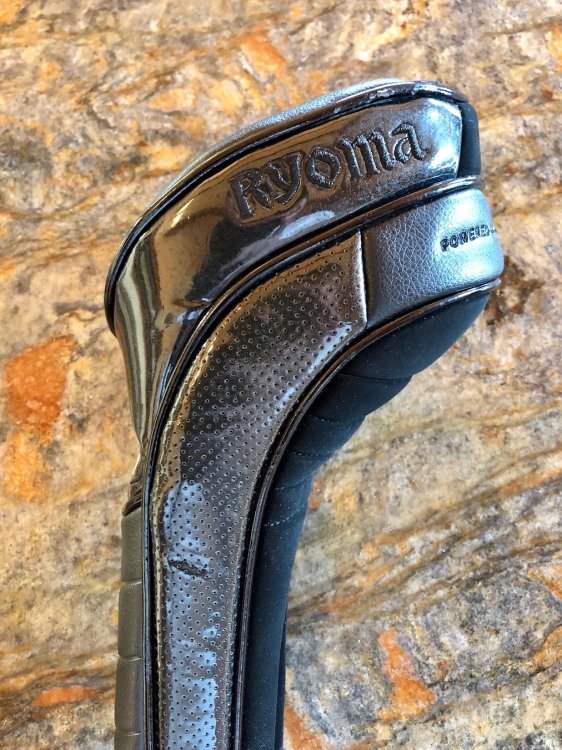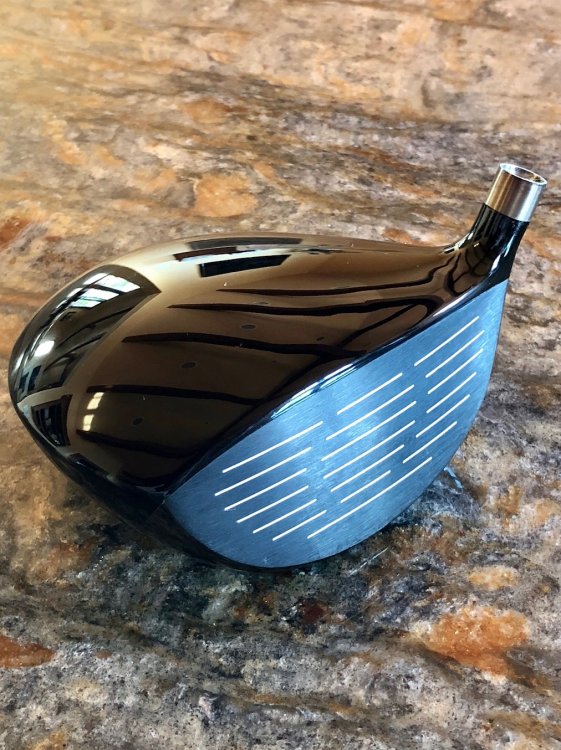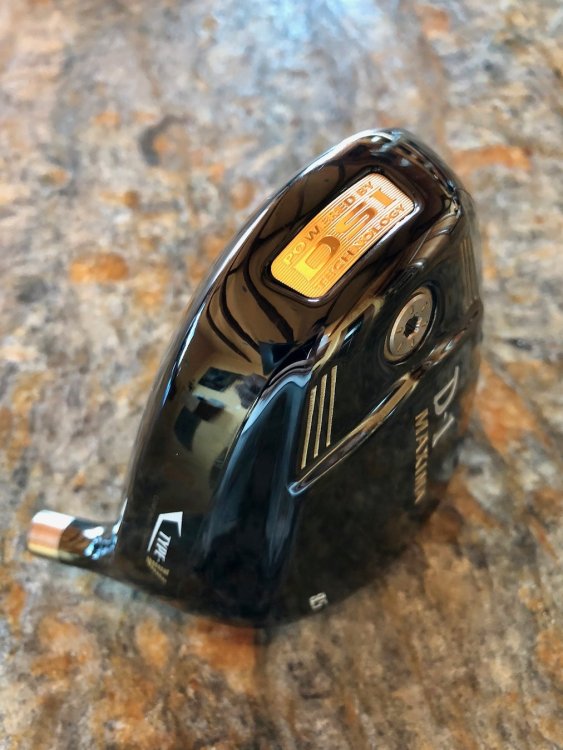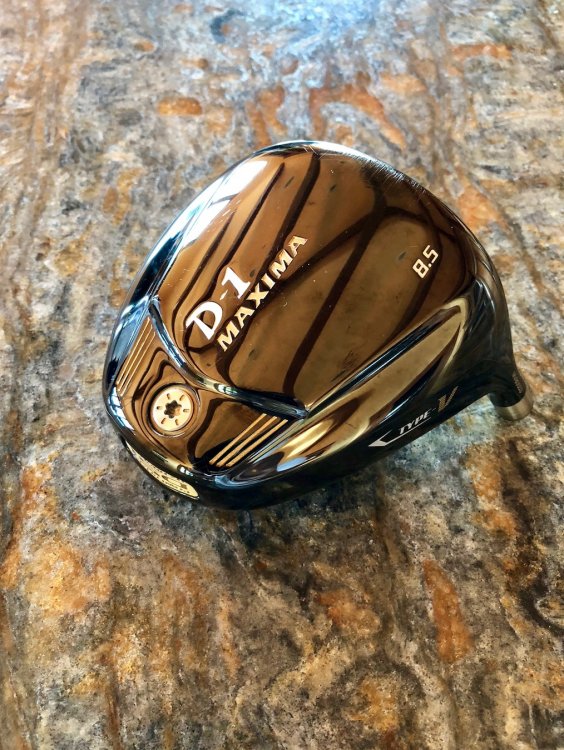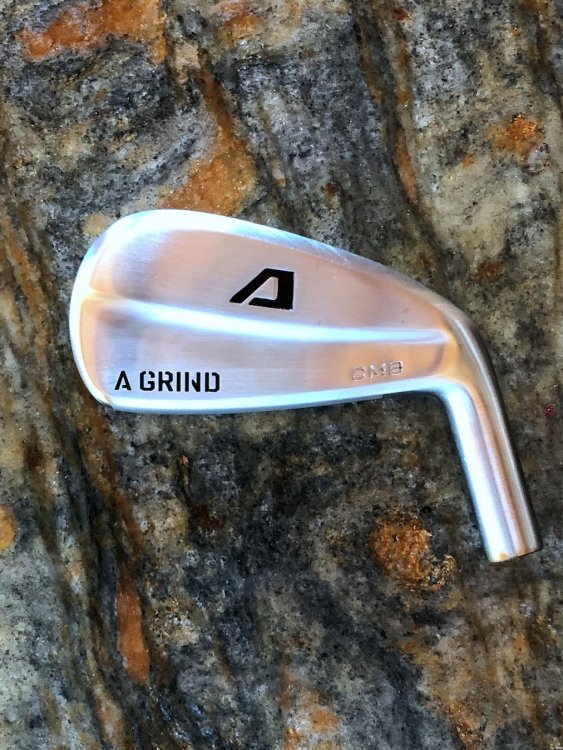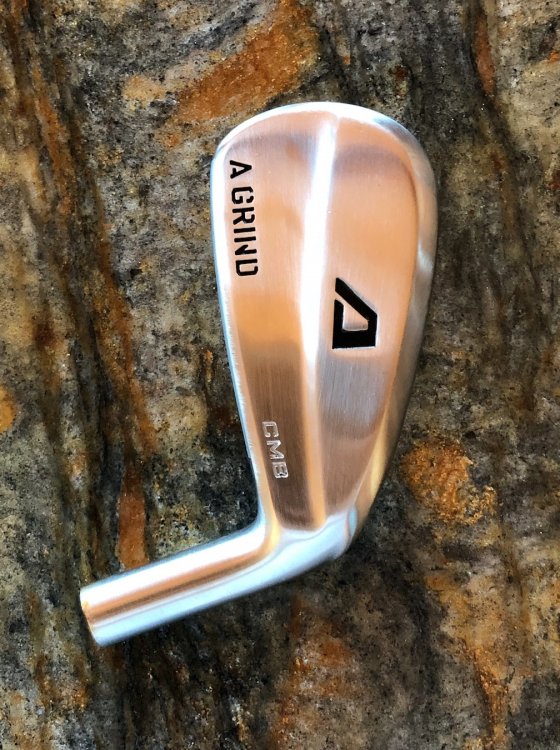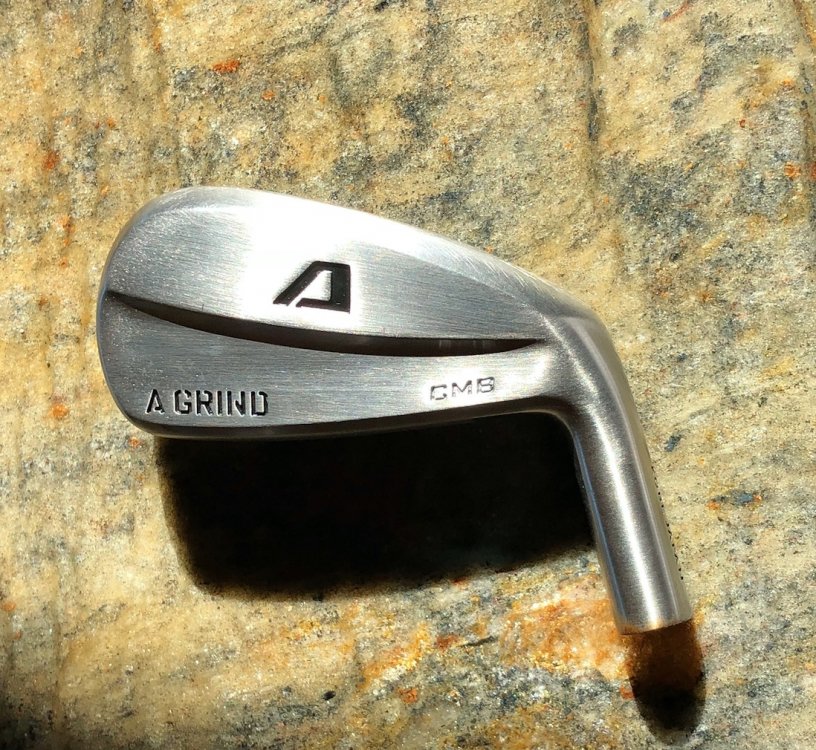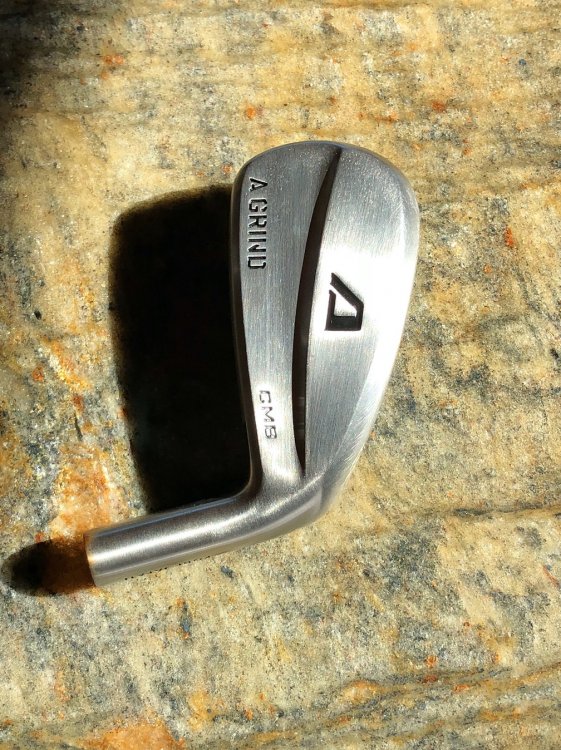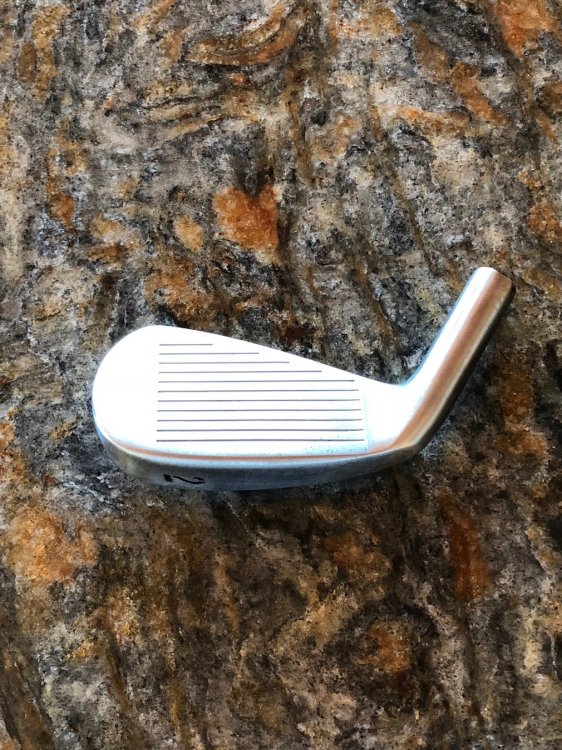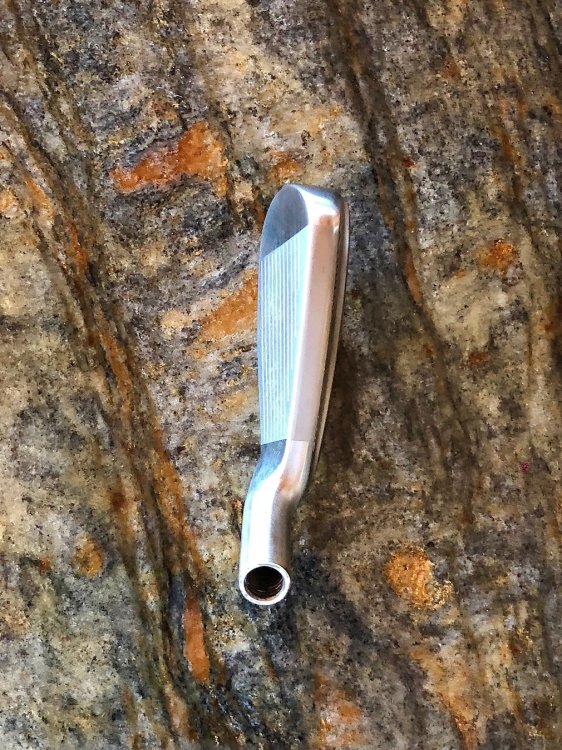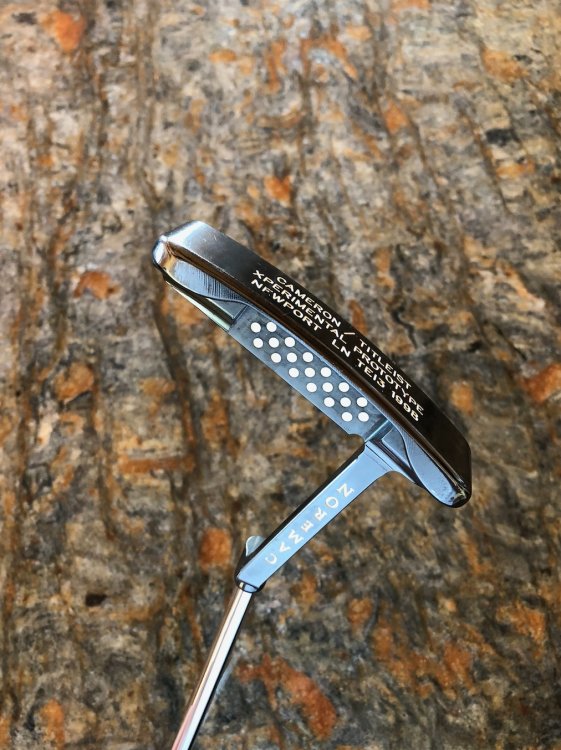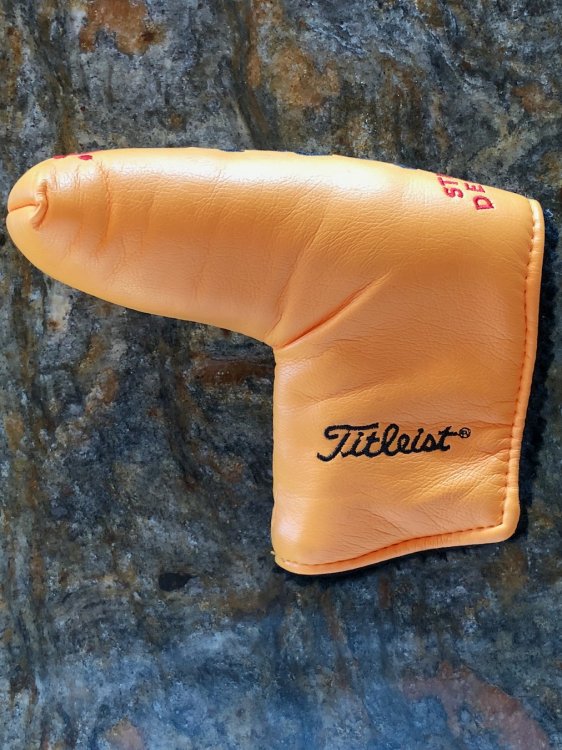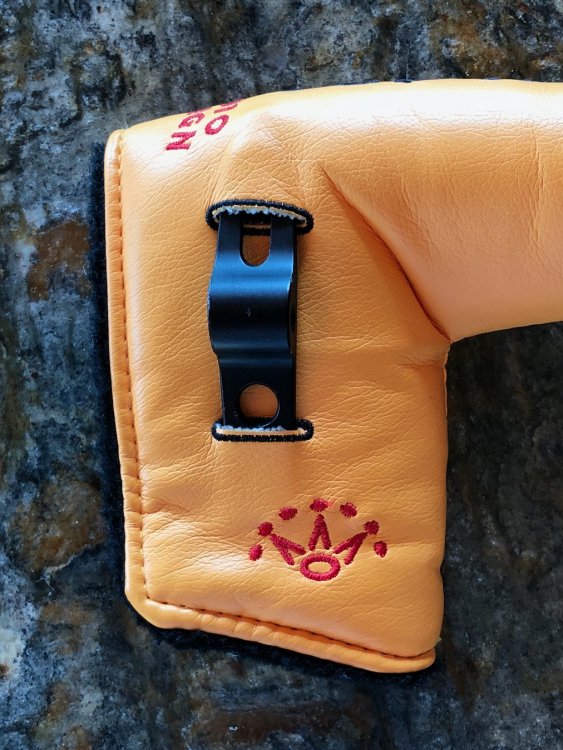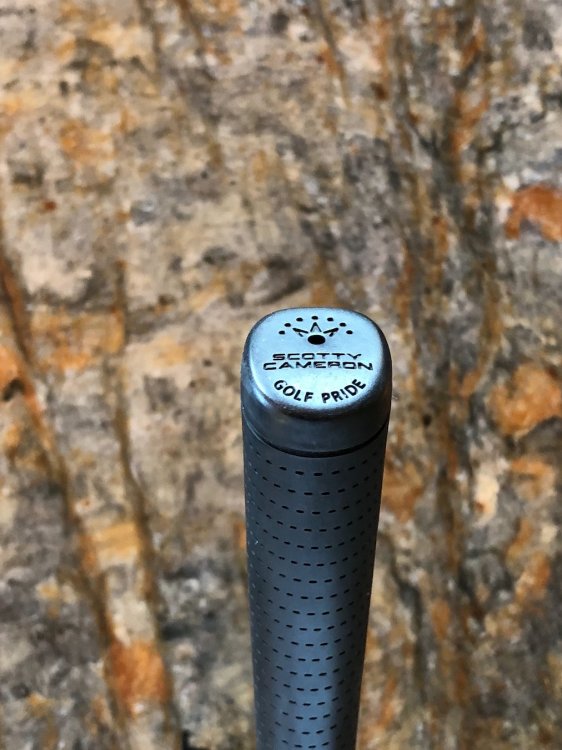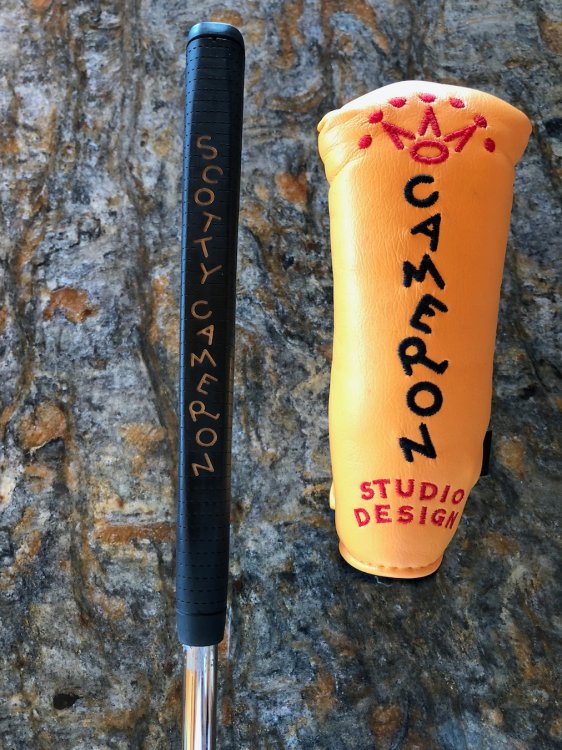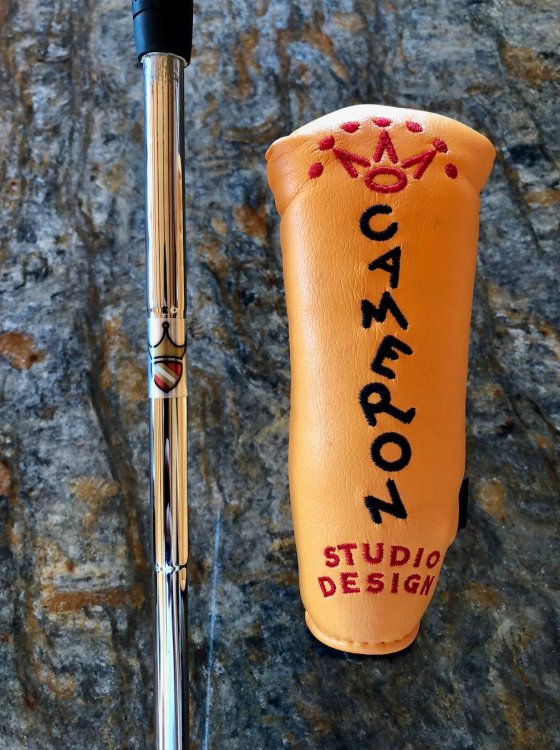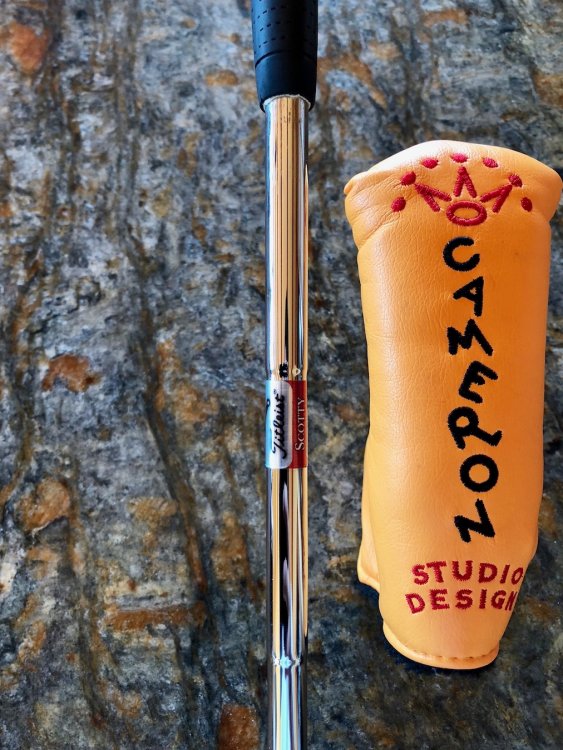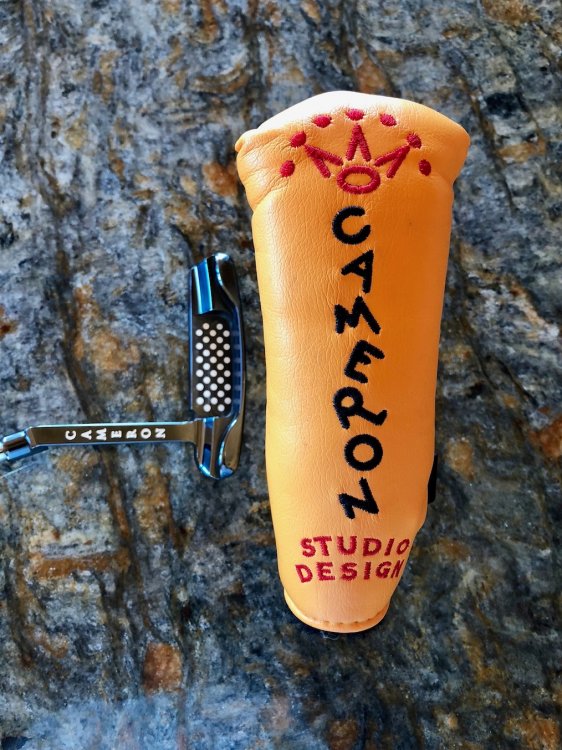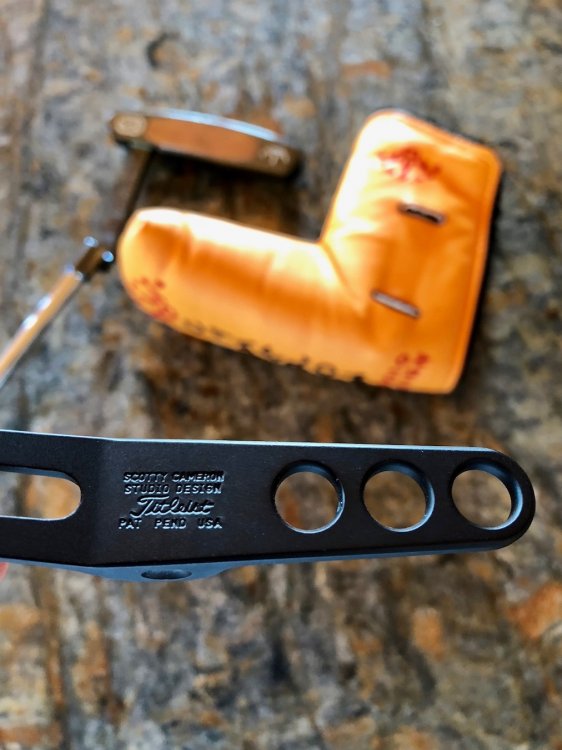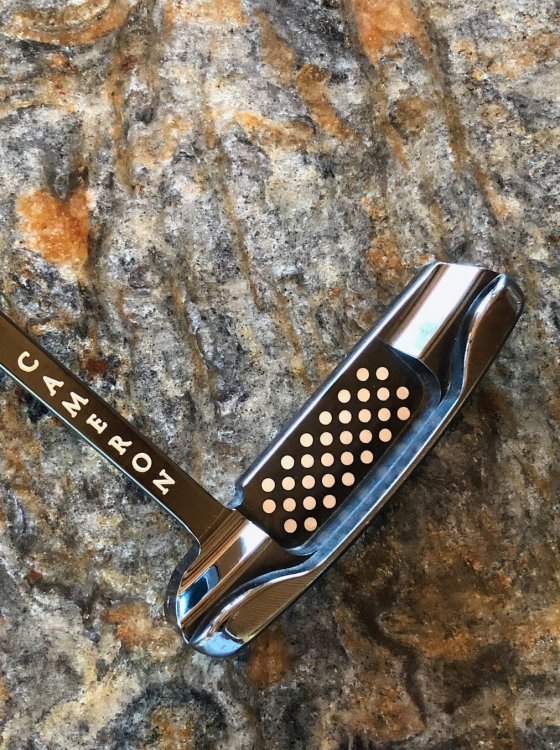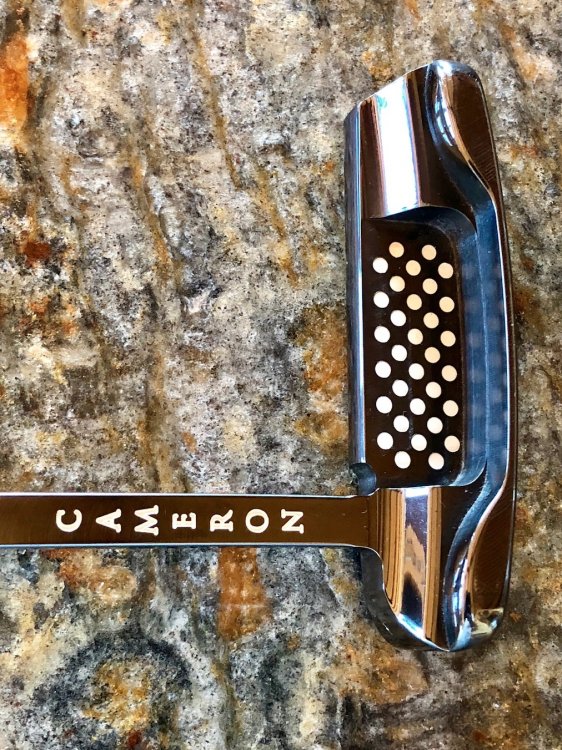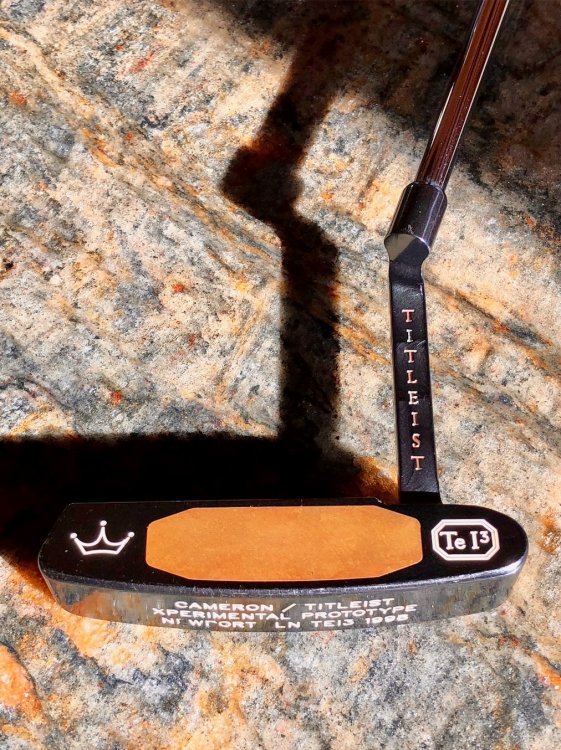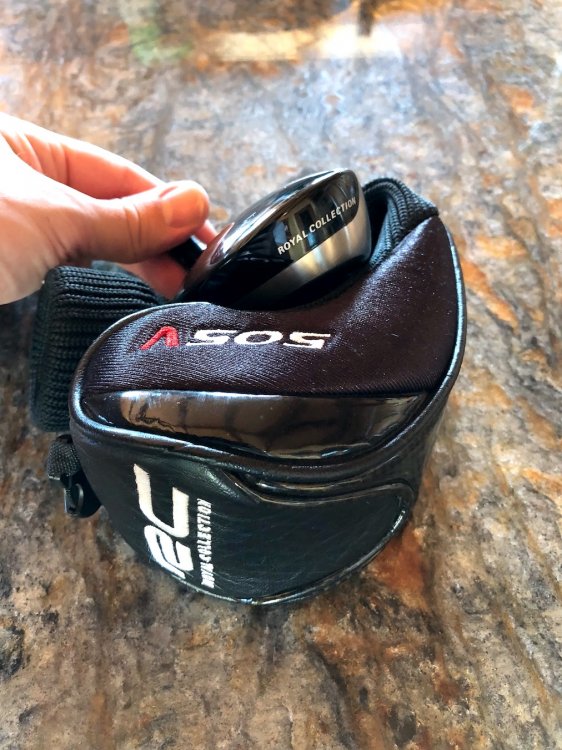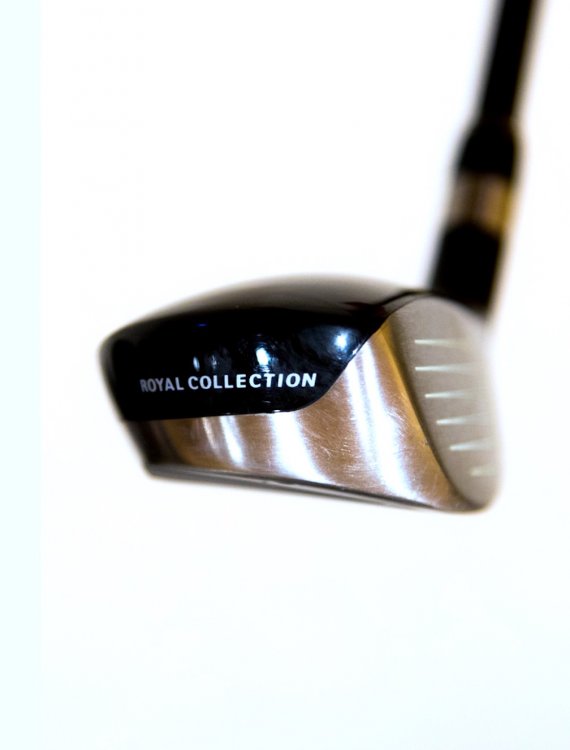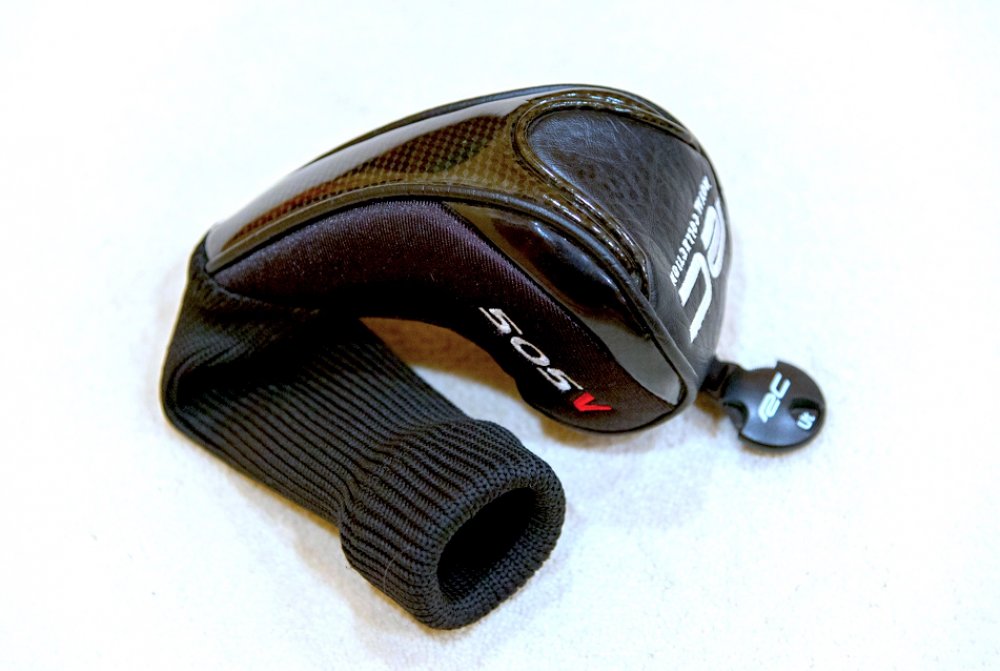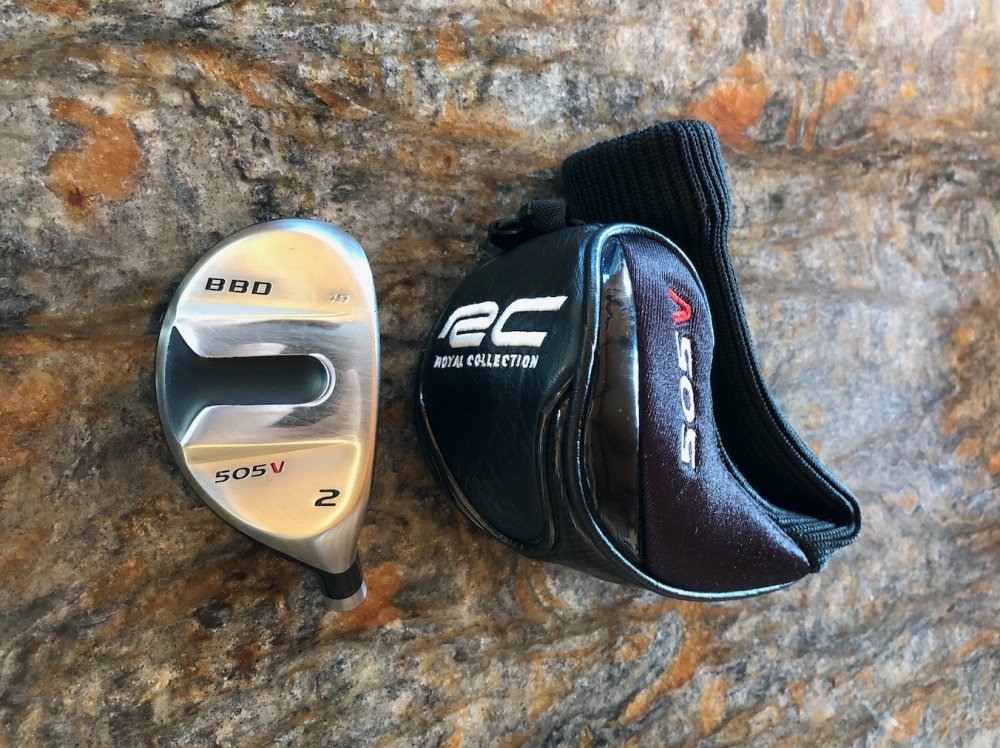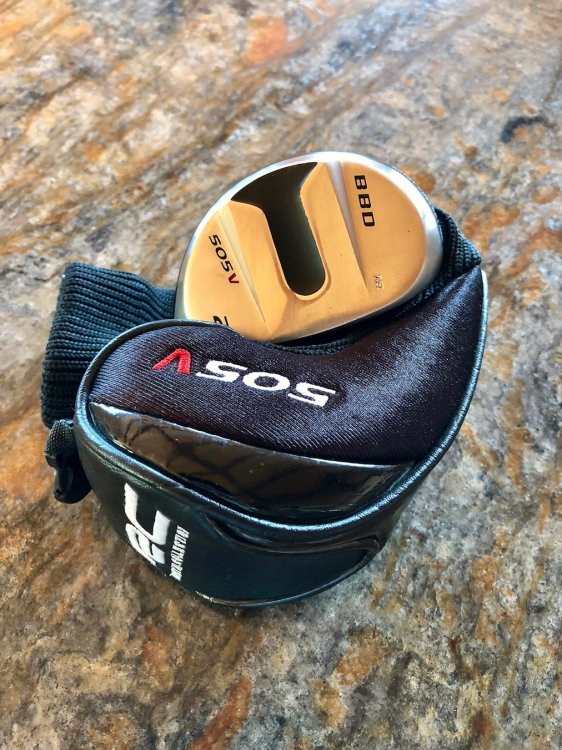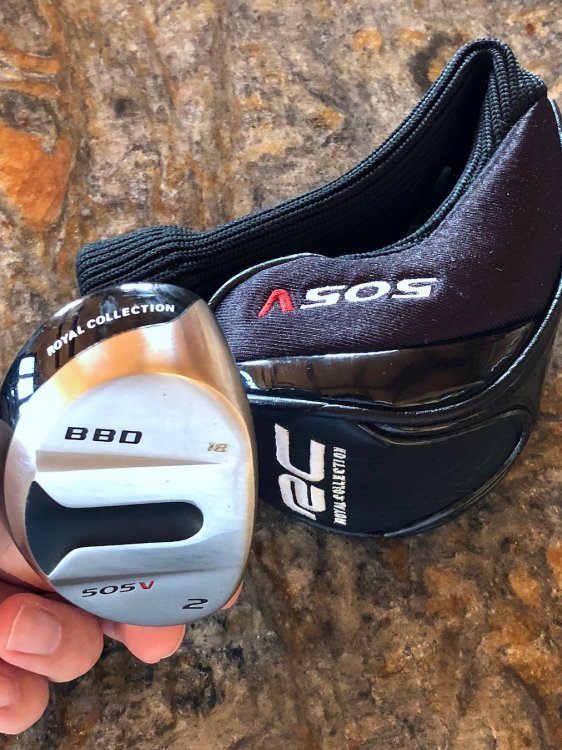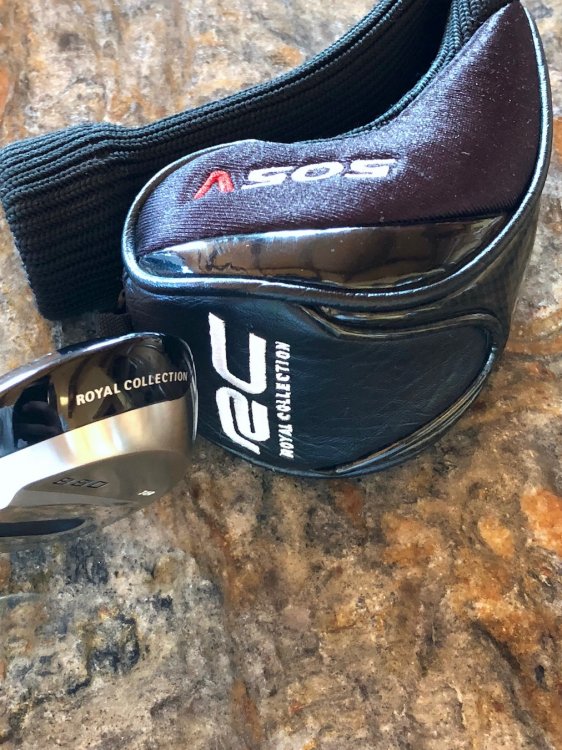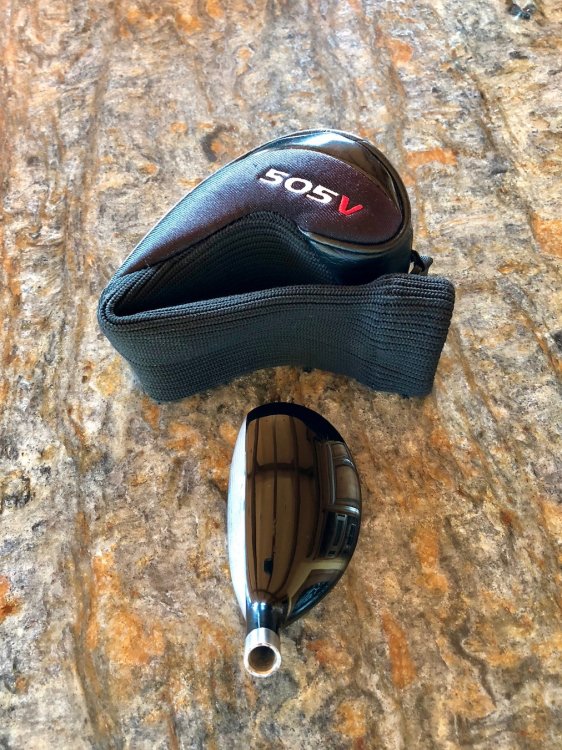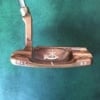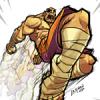Search the Community
Showing results for tags 'Shafts'.
-
2017 Epon Tour Wedge - 60 Degree. MSRP is $375. Precision Forged in Japan. Incredible feeling and super versatile wedge. Excellent condition with very little use. Hosel has been reamed out slightly. 300g $275 - Free Shipping Titelst Vokey Cold Forged Wedge Set straight from Japan - 52, 56, 60 Degree. MSRP was $250 per wedge. US Vokey wedges are cast whereas Japan Vokey's are Cold Forged for superior feel. These are buttery soft and perform extremely well from any lie. Super versatile wedge. Excellent condition, very little use. 300g, 296g, 290g $495 - Free Shipping. Seven 2016 Original Wedge - 64 Degree [/b]Insane Spin and very versatile, similar to the Vokey. Excellent condition. 306g $150 - Free Shipping Modus 3 System 125 Wedge Shafts, Shimada Tour Black Wedge Shafts, True Temper Spinner Shaft Selling these together for the guy who likes to experiment. Modus Lengths - 34.25", 34", 33.25" (.360 tip), 33" Shimada Lengths - 34.25" - 115g, 34" - 114g Spinner - 34 3/8" - 114g $125 - Free Shipping Continental US. $20 International Putter Shafts UST Frequency Filter - 30.75 - 96g Shimada 121-P 120g Putter Shaft - 31 1/8" $40 - Free Shipping Continental US. $20 International
-
Hi guys, looking to unload some nice gear. Everything is in really nice condition. I take good care of my equipment. Not interested in trades, sorry. I’ve listed pricing for continental US. Feel free to message me for international and overseas inquiries. Rare Ryoma Maxima Type V in 8.5 Degree Loft. This is easily the longest driver I’ve ever hit. Absolute bullets and Super forgiving. Excellent condition. Unique feel. If you’re looking for more distance, there is none better than this. Comes with original head cover and optional heavy tungsten weight. $549.95 Free Shipping. Scotty Cameron Xperimental Prototype 1998 Longneck Newport LN Teryllium Tiger Woods Putter. Cameron Crown shaft band. Comes with head cover and divot tool. Super soft, buttery feel. 34.75 inch. Asking $549.95 Free Shipping Crazy Sigma Fairway 50 Full Length 50T Carbon 80g 2.7 Torque Super Low spin and launch. Extremely accurate shaft with a unique feel. MSRP - $400 Asking $175 $15 shipping Continental US Quadra Fire Express Prototype Hybrid Shaft 100x Full Length 50T Carbon Fiber. Best hybrid shaft I've ever used. Extremely tight dispersion, smooth and stable with a mid, penetrating ball flight. Quadra were the first brand to create the quad axis weave used in many shafts from many different brands today including Axiv, Honma and Graphite Design. 2 sections of 4 axis weave using high elastic carbon. Nano Technology that helps create a tight dispersion with low spin. They produce such high quality carbon that they actually supply carbon sheets to some of the top brands including Honma's ARMRQ which also feature the 4 axis weave in their shafts. The Quadra Fire Express Utility Shaft is quality shaft that that have become known for great performance and feel. 40 inch 105g 2.3 Torque X-flex. MSRP - $225 Asking $84.95 $15 Shipping Continental US A-Grind CMB Hybrid Driving Iron 18 Degree. Outstanding soft feel, made in Japan. Beautiful simple looks and very forgiving. This head is actually hollow which is required when producing a metal club this size and keeping it at the proper weight it's a 2 piece stainless steel SUS-431 body and head designed all around accuracy and straightness. Asking - $95 Free Shipping - Continental US Royal Collection BBD 505V 18* Really great head. Great sound and feel and great out of any lie. Definitely one of the best utilities I've ever hit. New this head went for $350 Asking - $49.95 Free Shipping - Continental US Let me know if you have any questions. Thanks guys.
-
I came across a great interview with Mark Gunther of Mitsubishi Rayon that gives a lot of info about their shafts, but is also a great discussion of characteristics like flex, torque, and the various things that often come up in conversation here and when ordering shafts. Here's the link to it and I'll also paste the copy below if I can for those who don't like to jump to other sites. (Hope this is ok, Chris.) http://www.golfalot.com/equipment-news/mitsubishi-rayon-mark-gunther-graphite-shafts-interview-3595.aspx?Source=RSS I'd also mention that Chris helped me find the perfect weight for me in the OTi iron shafts that are mentioned below and I absolutely love them. Great feel, tight dispersion, long, (and pretty). Interesting that they're seeing tour guys put these in their bag finally, too. Mitsubishi Rayon VP Mark Gunther Explains Graphite Shafts By Martin Hopley Jun 03, 2016 Graphite shafts first appeared back in the 1970's but it wasn't until the 1990's that they took off. They were a revelation as you could have a lighter shaft in your driver which meant you could make it longer and generate more club head speed for more distance. Since then graphite shafts have become common place at the top end of the bag, but how much do you really know about them? I met with Mark Gunther, VP Sales & Marketing for Mitsubishi Rayon to find out. Hi Mark. Firstly can you give some background on Mitsubishi Rayon golf shafts? It’s close to thirty years that Mitsubishi has been making graphite shafts, so our group was really one of the pioneers in graphite shaft technology. We made a lot of private label shafts for the golf manufacturers originally and then we moved into making our own products when the operation went global in 2004 and that is when Mitsubishi decided to develop and launch their own branded products. Two of us were hired in 2004 and we opened our office in California early in 2005 to enable us to launch internationally with our Asia team and on the global Tours with the Diamana Blue. Can you explain some of the background for Mitsubishi in graphite products? Mitsubishi Chemical is our parent company, which is something close to a $60 billion group, and they have a chemical division, a plastics division, a pharmaceutical division as well as the carbon fibre division that we are part of. I think that is what makes us unique as we don’t just make shafts, but we also make all the raw materials that MRC golf use to make shafts. We make our own prepregs we make our own carbon fibre, we make the white acrylic fibre that you turn into carbon fibre, so we do everything within that group. Nobody else does that. Our competitors would go to one of the world’s large manufacturers of prepreg to source the prepreg to allow them to make shafts. So what is prepreg? Prepreg is the sheets of raw material made up of carbon fibres and resin which is the raw material for the shafts. It starts by taking the fibres and you impregnate it into a sheet of resin to make large sheets. They then get cut into the pattern that the shaft is made up from and then roll all of the pieces of the pattern that the engineers have designed. It actually has paper on the back as it is sticky which allows you to adhere it and assemble it together once the paper has been removed. So prepreg is a core component and Mitsubishi is the world’s third largest manufacturer of prepreg and it is a great advantage to the shaft company as it means we can use our own materials. So is prepreg just used in golf shafts? No, anything made out of carbon fibre, for example cars or bikes use prepreg. So there are three core types of prepreg that I am familiar with. There is Uni-Directional prepreg which means everything is going in the same direction and you bind up the carbon fibres as straight as you can and as thin as you can, which is why you can’t really see the fibres as it just looks like flat cloth. The second is called Woven where the fibres cross and woven can give you some of the characteristics of carbon fibre and the strength but there is also a visual aspect. So you see cars and other things use it a lot of the time in areas where they need the function to take weight out of the car, but where they also need some sort of striking visual element, for example on a dashboard or exterior panel. Finally the third is Tow prepreg that is a new cable type application that we are using in the new OT irons series. So when you are designing a shaft how do you decide the profile of the shaft? If we are trying to launch a shaft into the aftermarket it would start with a concept and sometimes that concept comes from us trying to fill a void in our product line. As things evolve you sometimes find out that there is a performance attribute, for example launch or spin, that we don’t currently cover. Is it a constant reaction to ball or head design that requires you to respond with shafts that match the new launch conditions? To a certain extent. At its core Mitsubishi has targeted three bend profiles designed to provide a High, Mid and Low launching product. These three bend profile concepts are most recognized as part of the Original Diamana Series nicknamed Blue Board, Red Board and White Board. The Original Blue Board was mid launching, mid-low spinning, the White Board low launch and low spin and the Red Board higher launch and higher spin. Often we take a similar approach across our other shaft brands with perhaps slightly different nuances, but not always. Occasionally there is a time in the market due to changes in equipment such as heads or balls that we see a void in our line-up of products that we try to fill. Or, there comes a time when a new brand is needed in the market, for example with the Mitsubishi Tensei product that we launched at the beginning of 2016. Blue was the initial Tensei profile because that was the mid launching product and we find that that profile, with its launch and spin characteristics, fits a wide range of players, whether it be Tour or aftermarket, so a lot of times we start there. So you use Blue, White and Red across all of your products? Yes, we try to use those categorisations across all our brands and then there are different nuances where the different brands are designed to different things. So for example, even though we had the three profiles, the Fubuki brand historically all launched higher than the original profiles, but with a very low spin. I would like to ask you about some of the standard terminologies we hear when talking about shafts. Let’s start with flex. There’s no standard measurement for flex, so how do you measure it? It is a little disappointing aspect of our industry that there isn’t actually a standard rating for flex. Mitsubishi from a flex stand point, talking about R, S, X, we have targeted vibration frequency numbers as standards for the stiffness of a shaft. So when I order an S-flex product regardless of the brand it is typically within a very tight range for Mitsubishi. Is that determined by putting the butt in a clamp and then measuring the vibration of the tip end when a weight is applied? Correct. Basically that is how you would measure it, but obviously it is a little more sophisticated from a design standpoint as they are using CAD machines and they are able to dictate what they want that to be and what the materials need to be in order to achieve that. So for us that means we have consistency between our shafts for what R, S and X means in terms of stiffness and obviously club builders and fitters get to know that. Actually some guys don’t actually worry about that and take each shaft individually and have their own way of testing it because how you clamp it and the weight you put on it can impact the frequency. So a lot of times club builders come up with their own measurements, they test every shaft that comes in, they write the number on the butt and then build them from there. Can you explain what torque is and how do you measure it? There are lots of ways to measure torque and we measure it in multiple ways, but it is simply the measurement for the amount of twist in the shaft. So flex is how much it bends in one direction and torque is how much it twists in a rotational way. There is actually a misnomer where some people equate low torque with a better shaft for whatever reason. Historically torque is a function of the overall performance of a shaft and how much torque you do or don’t need is going to depend on the type of player you are and even the head of the club you are using. So on Tour the size of the heads being used has changed tremendously over the last 10 years and I’ve seen even the best players in the world able to use, or maybe even need, a shaft that has a little bit higher torque rating than they might have used 10 years ago. I think that is just a function of club size and centre of gravity location, so it is changing. Will lower torque will deliver less spin than higher torque? In general. But I can have a low torque shaft with a softer tip frequency and that is still going to generate a little more spin. The R-Series is one of those products for us. So the original Diamana Red Board was a unique animal. It was very popular on Tour as a fairway wood shaft, but if you actually go back and look it was actually lower torque than Blue Board, but it had a soft tip frequency so it launched the ball very easily even though the torque was very low. It is actually a very tricky thing to achieve, not many manufacturers can deliver a low torque product with a softer tip frequency and have it be played, but we had a lot of success with that product in fairway woods. We had lot of success with the original Diamana Blue Board and a lot of guys building clubs with it and we were getting a lot of requests for a matching fairway wood shaft, so actually the Red product was designed to be a complementing fairway product to that original Blue Board that was out on Tour. Subsequent models did not follow that theory as we have actually developed dedicated Diamana fairway wood products. It is not as well known as the Tour guys don’t stock it. They’d rather take a 46” shaft and cut it as they don’t want to keep extra inventory. You have mentioned soft, firm and hard tips, so does a softer tip allow the club to add loft? Yes, it is giving a background element of more dynamic loft and it is going to impact the launch and depending on how soft or firm then it has a direct correlation with spin. So it has more of an effect on spin than torque? It’s a combination. Torque is a stability measurement in that torque is trying to fight the club head twisting, but still a shaft that is softer in flex just because the club isn’t moving around a lot it doesn’t mean it isn’t generating a left to right spin or a right to left spin, so that is why low torque with a stiff tip is a very popular combination on Tour. That is because these guys generate tremendous club head speed and they create it due to a very late release so the club is travelling very quickly through the impact zone so they need that stability. And finally kick-point. Would a higher kick-point would give you a lower trajectory and vice-versa? Correct. When it comes to fitting is it a case that we could all play with most shafts, but the key is really how you feel about that shaft and the one that feels best would be the best for you? We are all golfers and we’ve all had those days when we are swinging the club and it is feeling great so confidence in sports and certainly in golf is very important. That said there are a lot of options when it comes to shafts and shaft fitting and a good golfer could probably make a bad fit work as they can compensate, but I think in general you can really do yourself a disservice by not being fitted properly. A simple example is that you are looking to get a new club and your preference is to hit a draw off the tee. You buy something off the rack and you know nothing about the profile that the company has selected for their stock shaft. You get the weight and flex you like but the profile has a very stiff tip and is in fact designed not to draw ball and you can’t figure out why you can’t play your normal draw and you take your normal line from the tee and the ball keeps ending up in the woods. So you may be able to adjust to that but you are doing yourself a big disservice thinking that anything can work. One of the misnomers you hear from golfers is that they say they aren’t good enough to be custom fit when the reality is that it is the other way round and that the vast majority of golfers would greatly benefit from being custom fit. Good players will make a swing fit a club but average golfers cannot do that. Manufacturer’s choose certain shafts as the stock offerings to fit the design of the golf clubs. Is it the case that for a certain head you need a specific type of shaft and if you went for an aftermarket shaft the club wouldn’t perform as well? If you look at the typical manufacturer they will have a number of drivers in their range with each driver being designed for a certain audience, whether it be older golfers, or pro golfers, or improving golfers. They may have a philosophy they are working to, for example they may be saying “Loft Up”. There is a head design they are creating so as they get to a certain point they are typically trying to find a stock option that will maximise the performance of that particular product. So for example for “Loft Up” the TaylorMade SLDR driver was quite a low spinning head so they would be looking for something with a softer tip as it was quite a low spinning head and that would help the loft up option? With the latest Ping G driverthey talked about having a high kick-point in the shaft that allowed them to make the heads a little bit heavier without you feeling it so much. Are these the sort of trade-offs we are talking about? Correct. Different manufacturers have different philosophies and the latter is something that both Ping and PXG do. There is also the question of investment from a stock shaft standpoint and again it comes down to philosophies. For example Titleist has a philosophy of what they are trying to do and they have a pro version and a standard version. They usually have 6 stock options in shafts because they want the consumer to be able to not pay any up charge and have the ability to have the option of high, medium or low with another option in-between. That particular manufacturer has two dedicated shaft engineers inside the Titleist corporate office, which is all they do, test shafts for those specific products. So are they one of the most comprehensive in that respect? In the US they are one of the most comprehensive, yes. That is actually standard for a lot of the Asian companies who are heavily involved in the shaft development. I won’t mention any names, but there are some major equipment manufacturers that have no shaft specific engineer. So those manufacturers would come straight to the shaft companies? Yes, they would rely on us. They would still have a philosophy and say what they want and we’d then submit options and then we would go from there. It is really just different philosophies – they all work. If somebody didn’t want to or couldn’t be custom fitted, is their best option to go with the stock shaft in the knowledge that the manufacturer has picked it for that club? I would disagree a little bit with that statement if we are talking about the US market because to me, and it may be different in Europe, in the US it is pretty easy to get fit, there are just different levels of fitting. At every big box retailer you can go in and hit balls in a little bay and get some level of fitting advice. Even the customer service lines have been trained, so if you called the manufacturer of the club you were interested in you could call them and get some advice. The problem with the majority of golfers is what you want as a player and how you think you swing can be different from what you actually need. I agree and that leads into another thing I was going to ask was about weight of shafts. How should you decide the weight of the shaft you want, given they can feel heavier or lighter than the number written on them depending on a lot of factors, such as kick-point? You typically have a club weight you need to reach. So if the head is really heavy you won’t want a heavy shaft or you will have issues, but I think with weight mostly there is an individual preference. If you don’t know I think you can take some guide from the stock shaft from the OEM’s because they all put work into why the shaft is for the club. There is a reason, usingCallaway as an example, that the Bertha core offering is in the 50g range and that the XR Pro is in the 70g range as standard. Those are targets you can use to guide you a little bit. Is speed an issue as better players may want a heavier shaft partly for speed but also because they may want to feel the head or shaft a bit more? It’s a combination, knowing the type of players that are going to be playing the product; they try to bring you into a group that would typically fit that swing profile. But that is really where you need to get onto a monitor and get somebody to fit you. Twelve years ago the guys out here on Tour were using 80g and 90g driver shafts as a standard, but things have changed and heads have got bigger. Yesterday we built a 60g X Flex for one of the players. Have you been able to maintain or improve the stability despite losing all that weight? Yes, thanks to technology. We are a materials company and things constantly evolve. We have a product called MR70 which is a new fibre that Mitsubishi invented and it is the same size and weight as a traditional fibre that we use across sports applications, but it is twice as strong which allows us to use it to make shafts more stable without adding weight to the club. Mitsubishi's new OT iron shaft doesn’t have a seam that traditionally impacted shaft alignment, so is this no longer an issue? We are trying to invent thinner and thinner materials and multiple-layers to minimise the impact of seams and spines and I think we are one of the leading companies for this. The technology you are talking about doesn’t use the Sheet Prepreg we have been talking about it uses what we call a Tow Prepreg so instead of spreading it we actually bundle it together and make carbon fibre cables. The mandrill goes into the machine and we braid it around the mandrill before cutting it. This braiding technique is a newer technology and we can’t yet make driver length shafts lightweight enough as the material is too big and too thick. At the moment it is better served to iron and hybrid applications but I am sure the technology will evolve. Currently it seems graphite shafted irons seem to be for older players or slower swingers. Do you think we are going to see graphite shafts in irons for more people by getting them to perform to the sort of level for example an X-100 steel iron shaft? Yes absolutely. If I was a steel guy I would be nervous. I think in the next five years graphite iron shafts will be a regular animal on the PGA Tour and I think partly that is because more and more of the graphite manufacturers are now putting emphasis on development of iron shafts. What advantages does graphite bring to an iron shaft? Superior strength, the ability to more and be more precise with things like kick-points because when making a graphite shaft you can be more precise than by pouring liquid metal into a mould. That also means greater consistency from shaft to shaft and a greater durability. We are developing a prototype of that OT product and taper tip for the autumn with 105g and 115g for the Tour. So it is really lightweight steel with the advantages in fine tuning and consistency for players at this level.
-
Ok. I understand (not 100%) why Seven Dreamer's shafts, cost the pretty that they do and what you are paying for at each level. With that being said, if I didn't want to go that route, but still get a nice high-end performance shaft from Japan, that was a strong second choice what would it be? Mind you, realistically, if I had the money to spend, not sure I'd go SD's route because I am a bit rough with my gear. It stays in my car because I don't have space for them yet. I'm asking this because I'm very surprised that they are still making shafts for these prices after being away from the forums for a while now. Mabey I shouldn't be, but I am. Hell, I'm tripping that Epon is no longer on TSG's website!!!! Plus, SD is selling a $10,000 golf bag?!?! I'm crying trying to get a $500-$600 WinWin Style bag! LOL! Seriously, if you can't bite the bullet on SD's shafts, what else would be the next in line as far as tech and innovation.
-
Looking for 4-PW. Let me know what you have.
-
Selling a few experiments from the forums. 1) S Yard 380 10.5' 199g head. Purchase from member here. Shafted with real Kai'li shaft in X. Untipped. Plays 44.75" long. Just about perfect except for a little glue on the underside from the shaft and slightly on the crown all shown in pics. New GP Tour Velvet. Comes with headcover. Nice combo but does not fit me. It is very long though, I just need something more forgiving and higher launching. Head Sold, shaft for $100 if anyone is interested. 2) TT Monaco shafts in X flex. 4-PW with an extra brand new PW shaft. Only the 6 and 9 were shafted for testing. Got from Spoon. Very clean. They play to a 38" 5-iron. The Modus 130s won out is all. Sold! My paypal is [email protected] Thanks for looking.
-
Oban Kiyoshi White/Black 65, 75, and Hybrid in 04 Stiff Flex.
MahanFan posted a topic in Want To Buy
Hi, Interested in the items above. Thanks!


